The museum (opened in 2009) has permanent and temporary exhibitions highlighting the early history of Native Americans; Spanish colonization; the Mexican Period, the Santa Fe Trail (travel and commerce), up to present-day New Mexico. Located on the Santa Fe Plaza, the museum includes the Palace of the Governors (National Historic Landmark).
In the lobby were two historic photographs that caught my eye: the first is of Buffalo Soldiers that remained in New Mexico until the 20th century. After the Civil War, the US Army continued to enlist African American men. Six regiments were stationed across the Southwest.
The second photo is of Pueblo governors involved in a legal case protesting infringement on Pueblo lands in 1923. The official ebony canes (topped with silver caps engraved with A. Lincoln) were issued in 1864 by President Lincoln in keeping with a Spanish and Mexican tradition.
This area was the homeland for many Native Americans until the first Spanish exploration arrived in the mid-1500s in search of riches (as they had found in the Inca and Aztec cultures). In 1598, Juan de Onate arrived in Santa Fe with 500 followers and 10 Franciscan priests founded the New Mexico Territory for the King of Spain. Later that year, Onate ordered 70 Spanish soldiers to attack Acoma Pueblo where 800 Native Americans were killed and 600 captured. Onate sentenced them to 20 years slavery; and, adult males were to have one foot cut off. It was known as the Battle of the Mesa and caused terrible hatred between the invaders and the natives.
In 1680, the conflicts between the two erupted into the Pueblo Revolt. In coordinated efforts across the region, the Native Americans killed 21 missionaries and another 400 settlers, driving the rest of the Spanish south to Mexico. Hundreds of Pueblos died in the fight as well. Twelve years later the Spanish returned to reclaim what they had lost. And this time, they were here to stay.
By 1821, the territory had gained independence from Mexico and the Santa Fe Trail was first used between Mexico and the New Republic of Mexico.
At the same time, the fur trade opened up for beaver fur and bison hides. By the 1830s, the beaver trade had declined and many remained in the area as farmers, ranchers, and miners. But the Santa Fe Trail brought thousands through the area bringing everything a settler may want.
In 1848, the Treaty of Guadalupe Hidalgo ended the Mexican-American War establishing nearly all of New Mexico that became part of the US. In 1850 the Gadsden Purchase of another 30,000 square miles from Mexico was added to the state.
In 1863, the US Army ordered Kit Carson and others to resettle the Navajo and the Mescalero Apache (an enemy tribe) 350 miles away at Bosque Redondo on the Pecos River. Thousands died on the way. The 40-square mile reservation was intended for 5,000 people but soon held 9,000. Hunger, despair, disease, and bad water killed 3,000 Navajo and an unknown number of Apache as well...a despicable piece of American history.
New Mexico was split on the issue of slavery, with those living in the south supporting it and hoping to extend it to the Pacific Coast. Early in the Civil War, a confederate Texas army invaded New Mexico. They pushed north to Santa Fe where they flew the Confederate Flag at the Palace of the Governors. A battle with Union forces ended in a draw, but with their supply route destroyed, the Confederate troops withdrew and their were no more Civil War battles in the territory.
The railroad was established in NM in 1878. The railway opened the region’s economy to the rest of the country and a wave of newcomers began arriving shortly thereafter.
Fred Harvey (entrepreneur) developed the Harvey House restaurants, hotels, and gift shops that served rail passengers. He opened The Alvarado in Santa Fe where the wait staff were all single, young, women (as they were in all of his establishments) and wore black and white uniforms. They were famous for the excellent service provided. From the 1880s to the 1960s, over 100,000 women donned the Harvey Girl uniform. Many remained in the southwest, marrying ranchers, cowboys, and other honest pioneers.
New Mexico became the 47th state in the Union in 1912.
We continued to the lower level of the museum where there are additional displays on more recent events. The USS New Mexico was launched in 1918, but served in World War II after significant modifications in the 1930s. Also shown, is a portion of the 56-piece Ship’s Silver Service, made by Tiffany in 1917.
During WWII, 44,000 Native Americans served in the armed forces. Just 420 of them were Navajo (and a few other tribes) code talkers. They were assigned to Marine units in the Pacific. The code was never broken. Thank you for your service, Code Talkers. Wow!
In 1943, the supers-secret atomic bomb project was underway near Santa Fe. It eventually brought military laboratories, air bases, and defense contracts to New Mexico. The project changed the world in WWII, and the military opportunities became a crucial part of the economy of the state.
The final exhibit celebrates the many cultures, people, and opportunities in New Mexico along with the state’s diverse landscape, climate, and outdoor activities.
The lobby of the NM History Museum provides access to the courtyard of the Palace of the Governors.
John looked very serious in this truck prop! It almost looks real...
The Palace of the Governors was built in 1610 and served a Spain’s seat of government for the American Southwest. Between 1610 and 1822, 57 governors of New Spain’s territory resided here. In some parts of the structure the walls are 4’ thick; there are long galleries; small rooms; and courtyards. The New Mexico Portrait Gallery has various paintings of prominent and influential individuals in the state’s history.
The governor’s office has original artifacts and is very sparse, a common practice at the time.
Multiple floor hatches have allowed archeological studies of the ground beneath the Palace. The foundations of the original structure were also revealed.
Ancestral Pueblo and glazed ceramics (c 1600) found in the region are on display.
Other interesting artifacts were on display including this wood lantern with selenite panes. The translucent selenite was used because glass was not yet available in New Mexico. Several panels of the very rare Segesser Hide Paintings (created before 1750) are also on display. The tanned and smoothed hides depict Spain’s colonial life in the US.
Master craftsmen developed Talleres (workshops) in the 1800s to train apprentices and oversee their artistic work creating religious artifacts. An extensive collection is on display at the Palace.
We also spent some time perusing the extensive book collection at the museum gift shop.
We thoroughly enjoyed our visit to the History Museum and the Palace of the Governors. Admission is $12/adults and $7/NM residents, a very reasonable price for this museum. Docent tours are offered as well. For additional information, go to www.nmhistorymuseum.org.
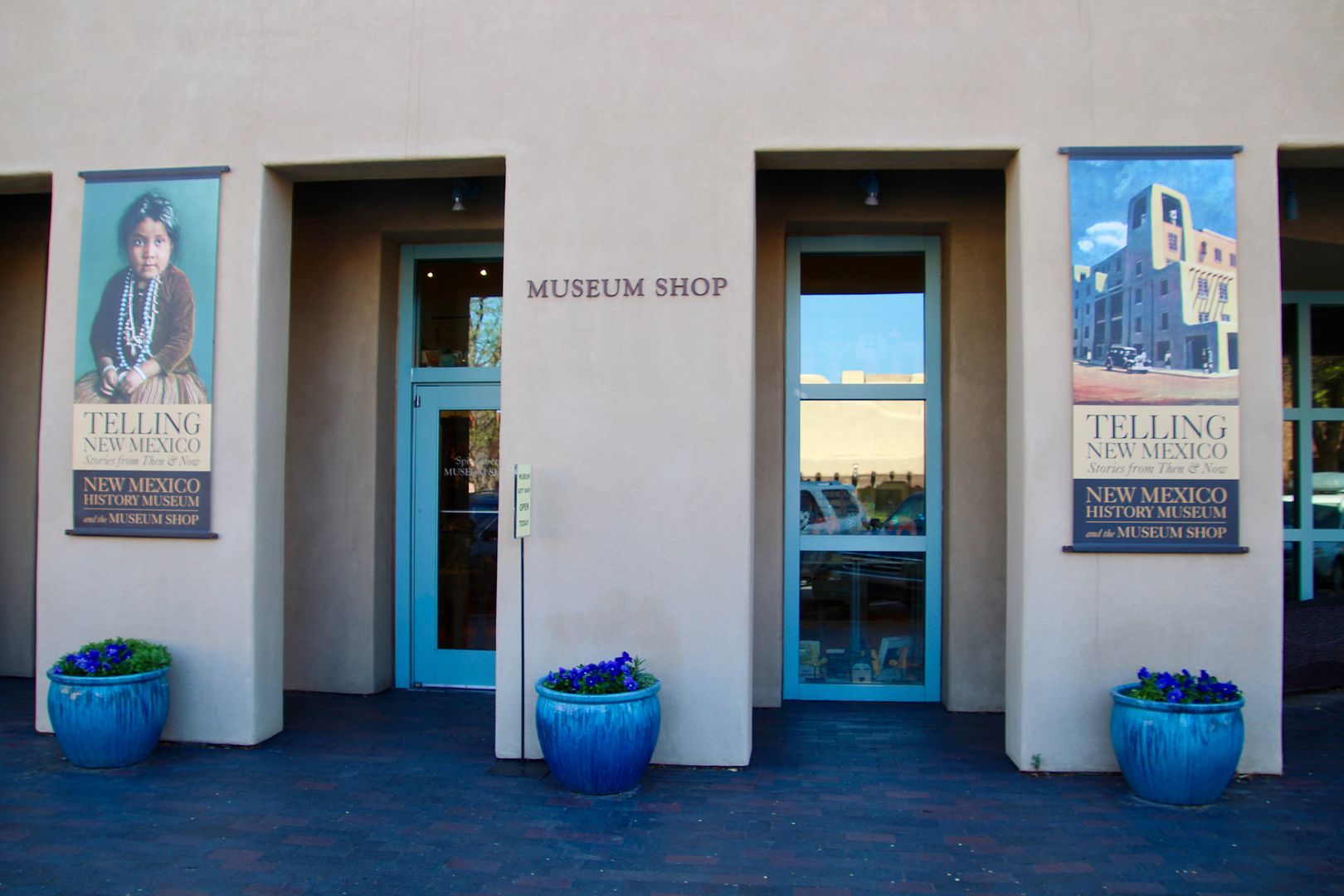
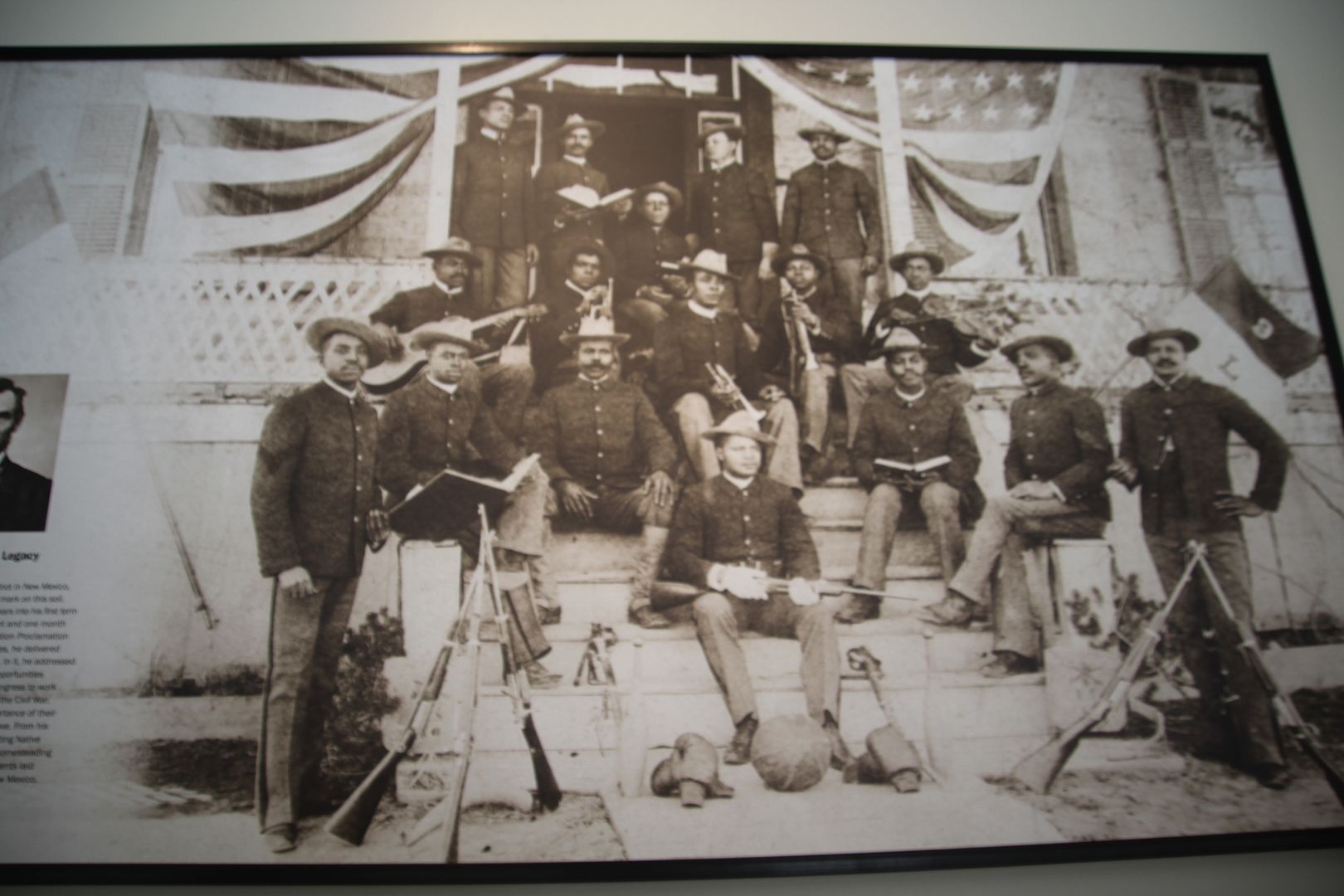
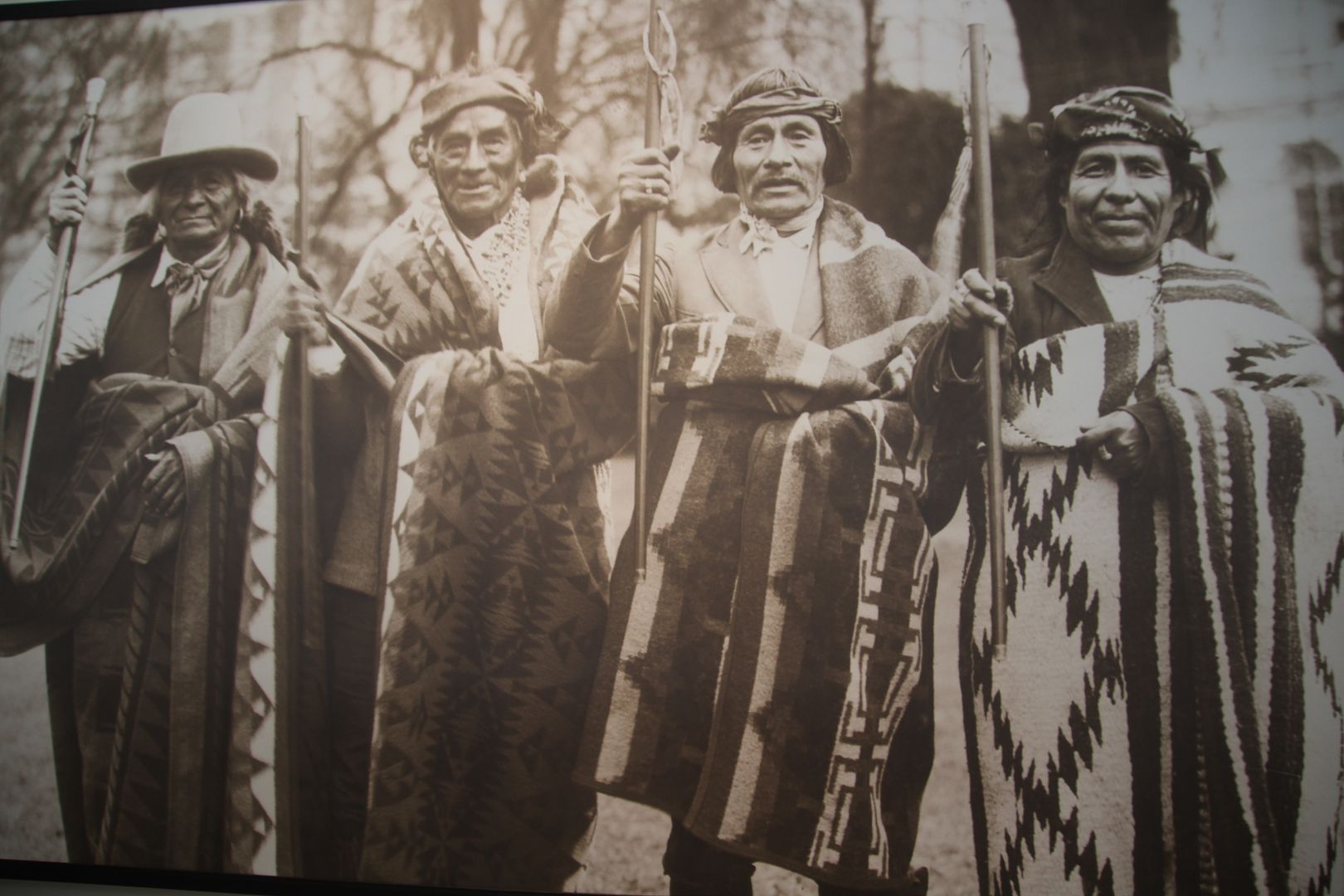
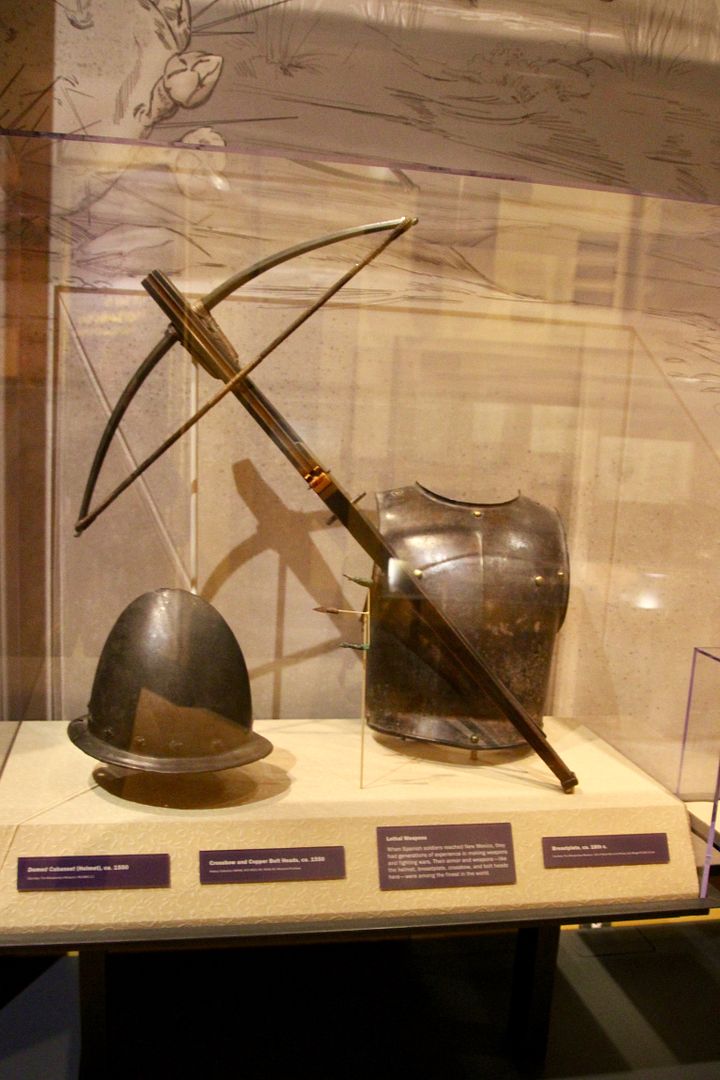
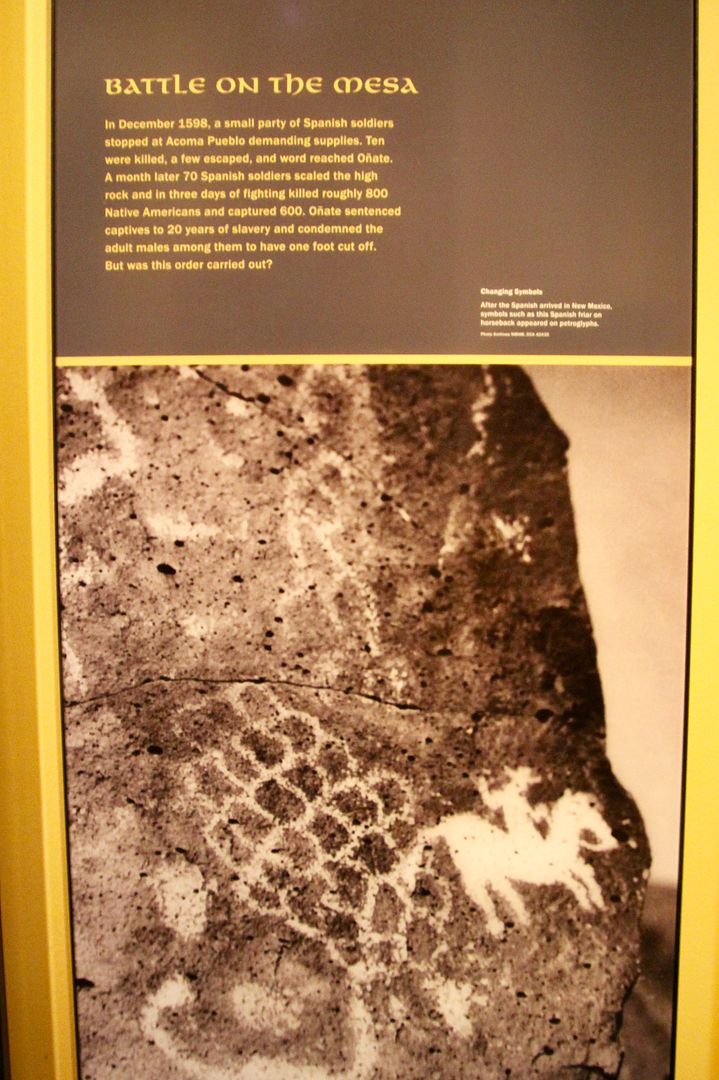
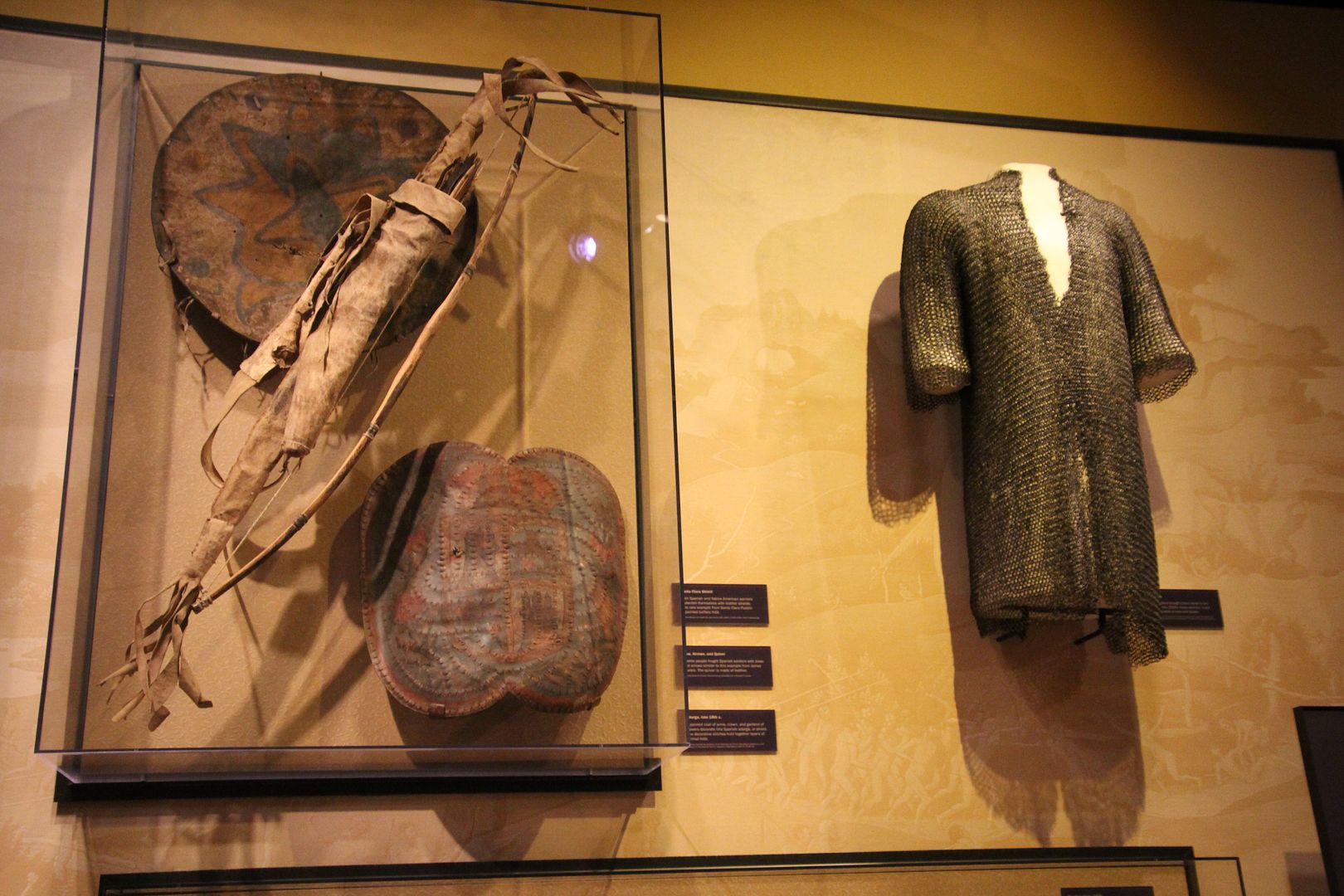
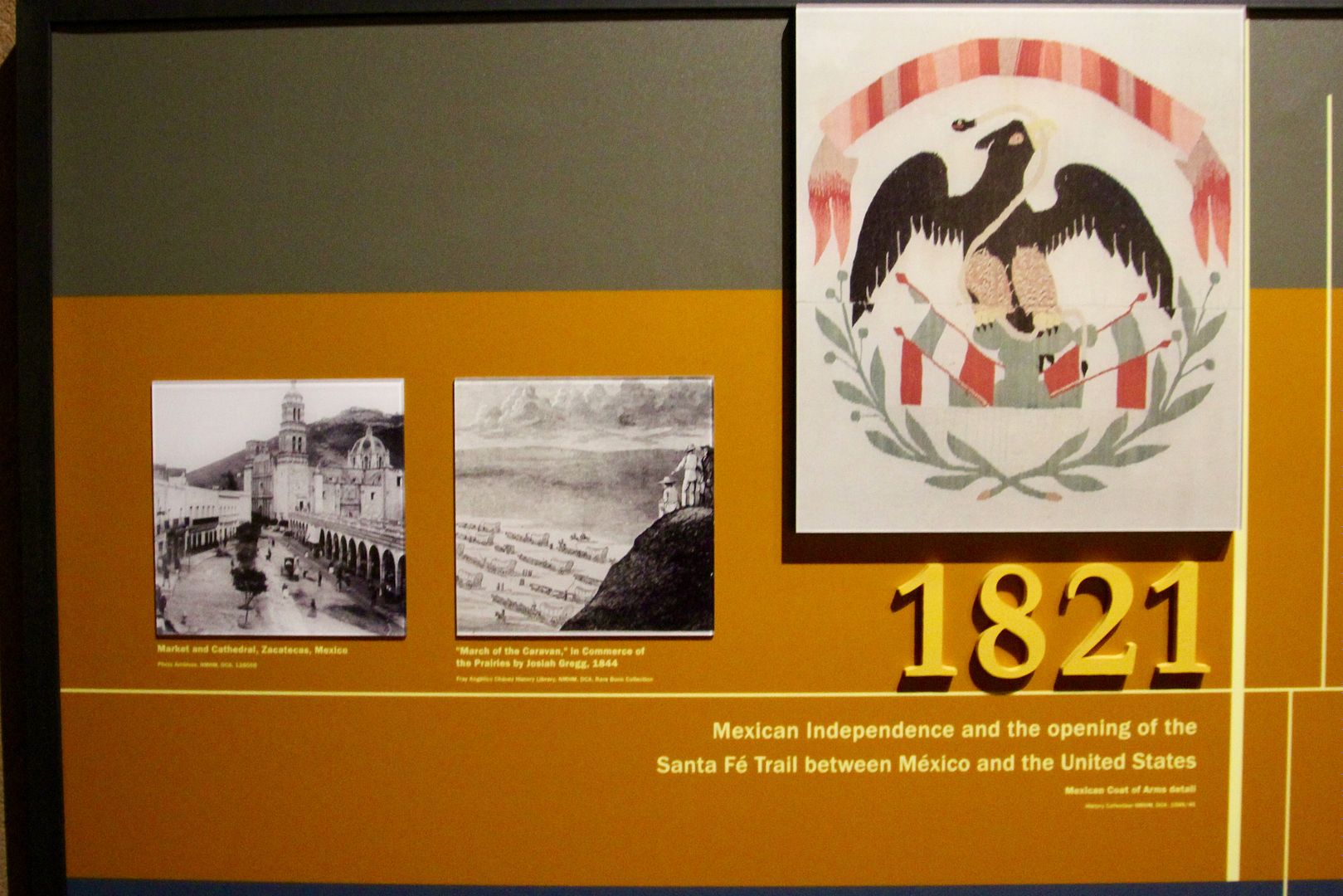
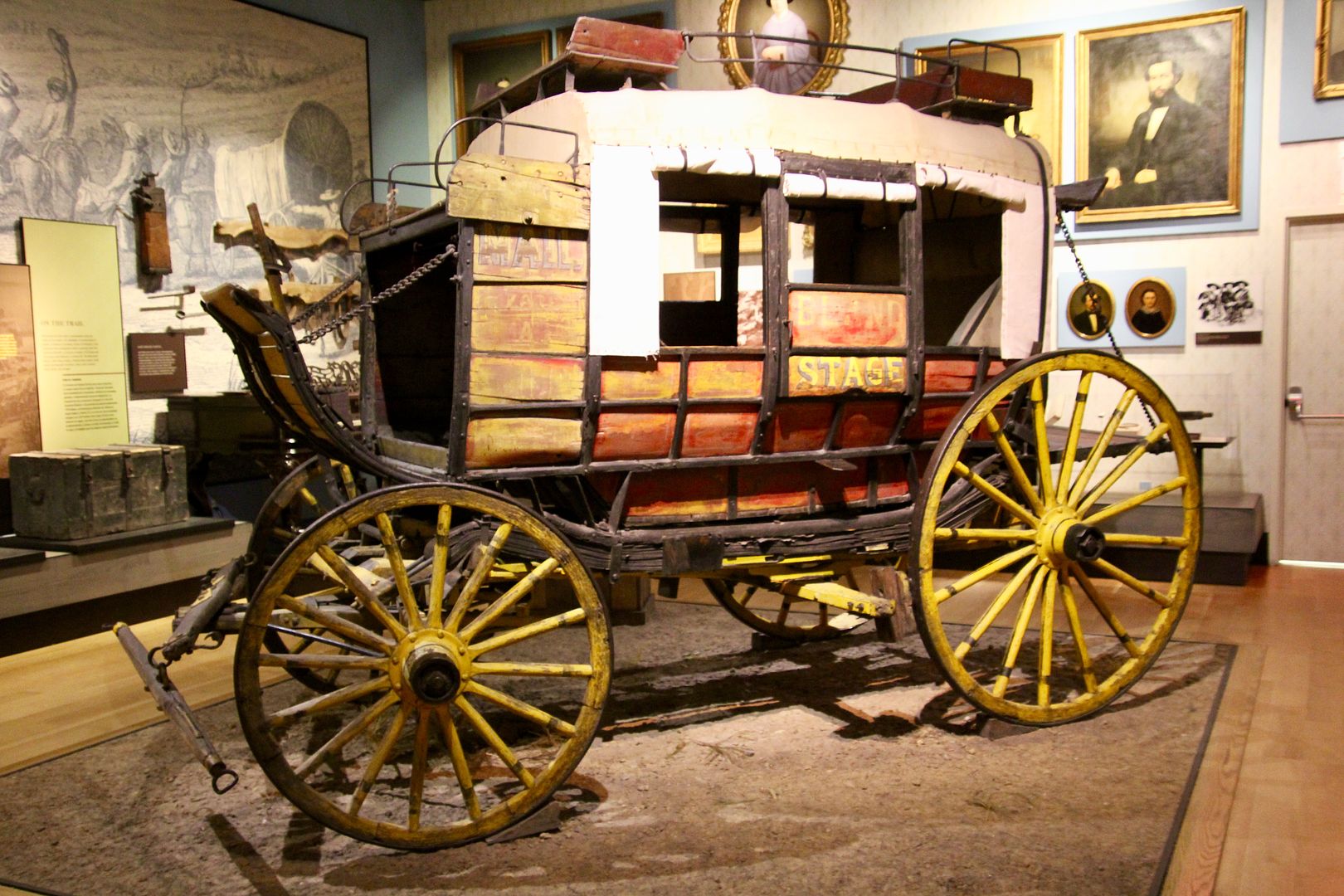

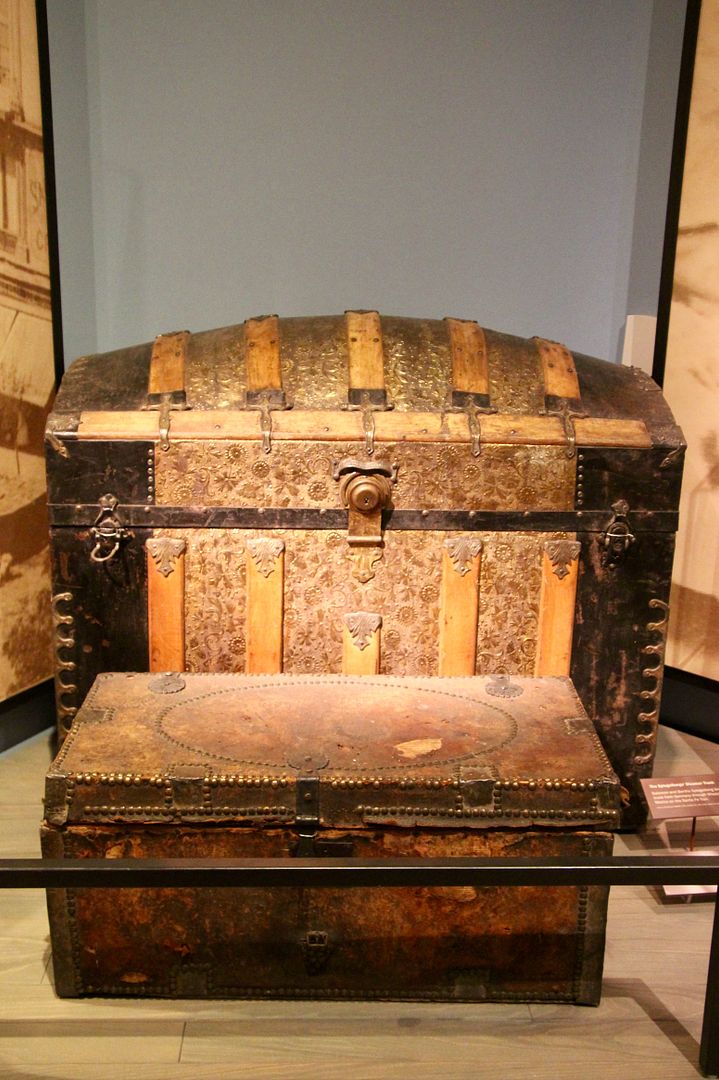
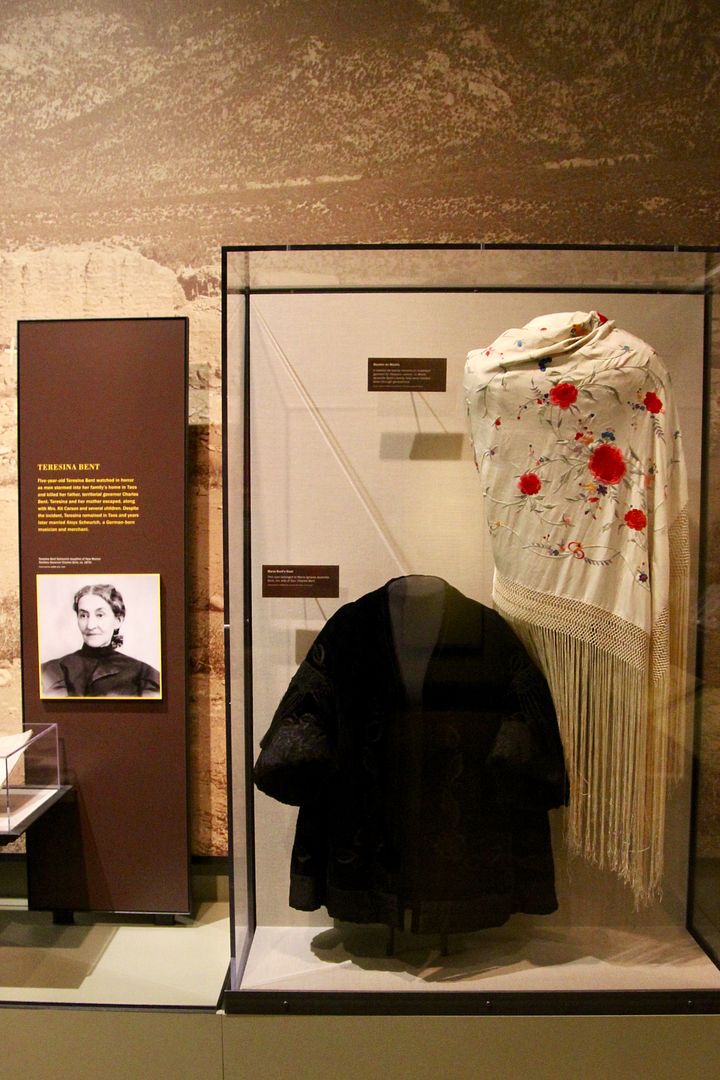
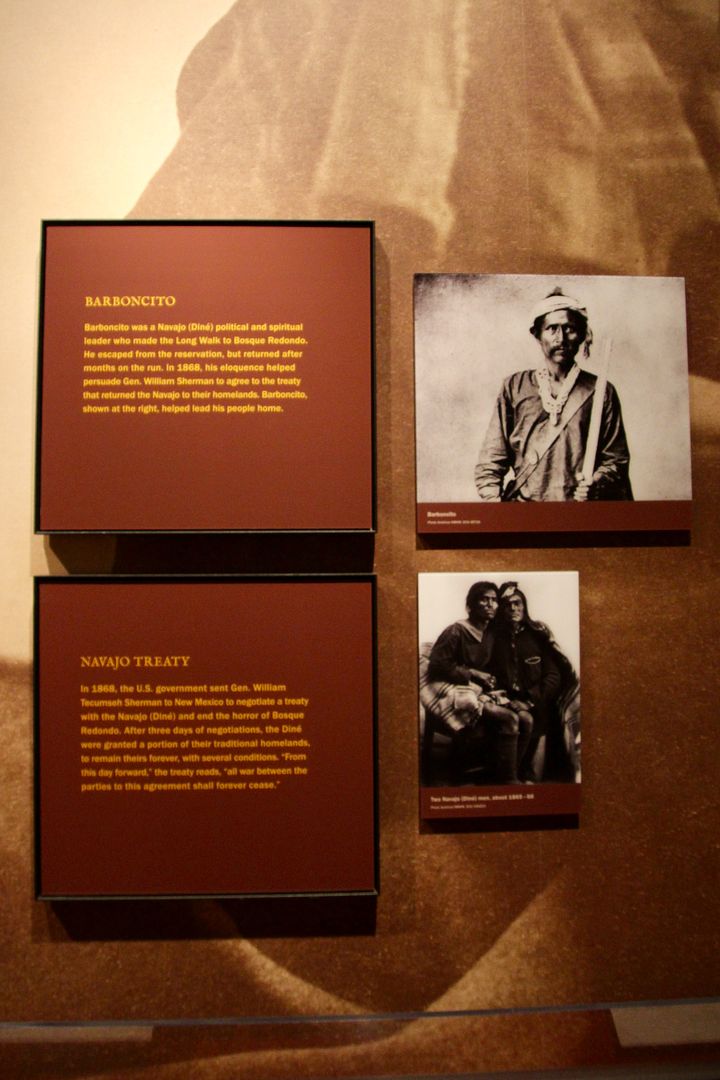
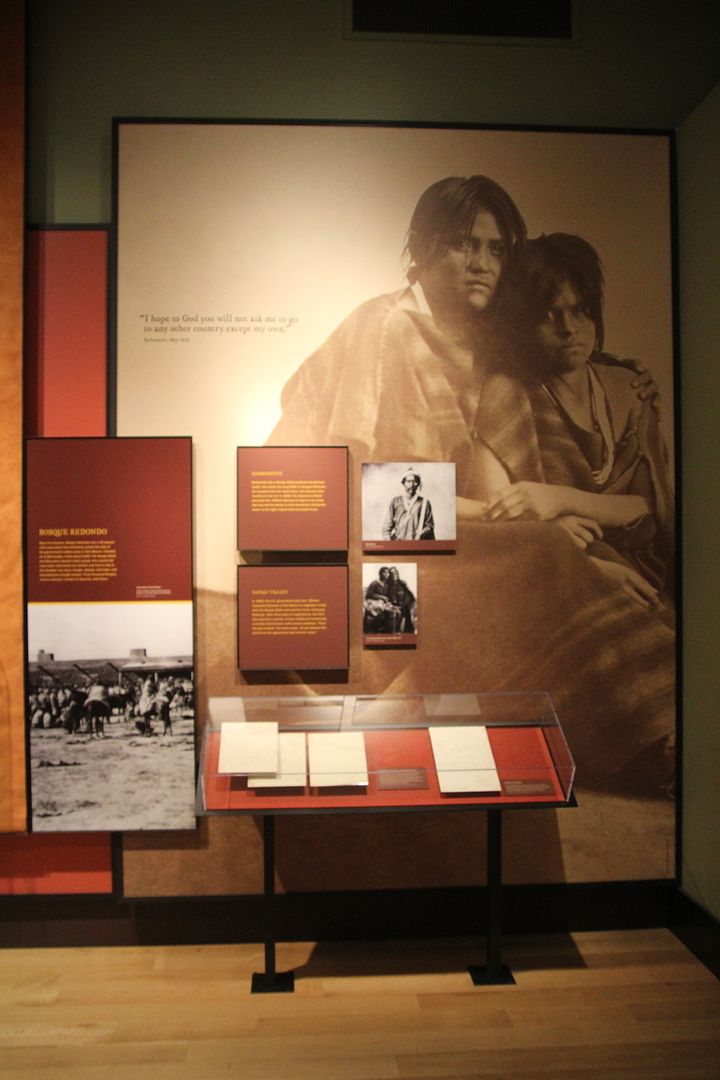
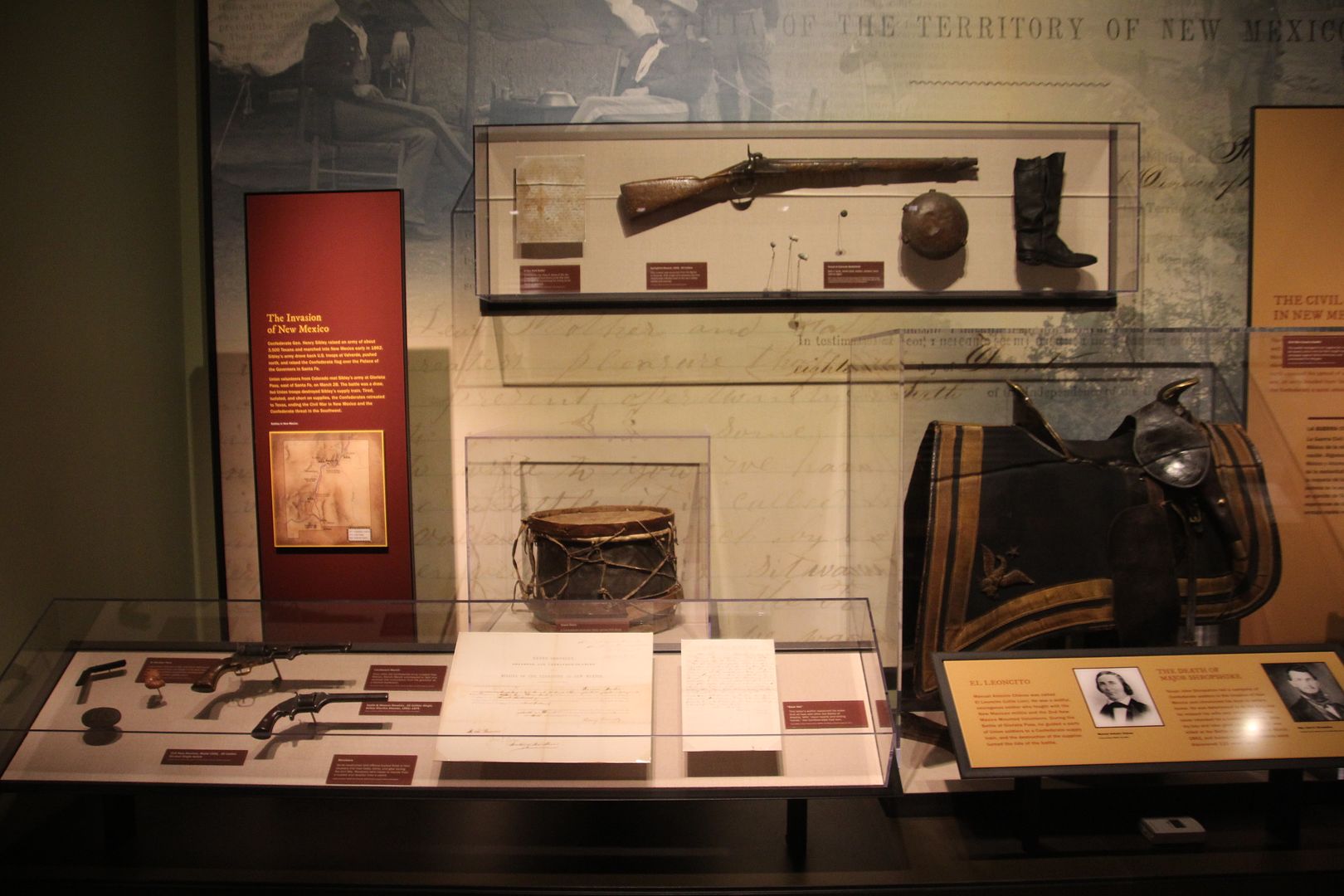
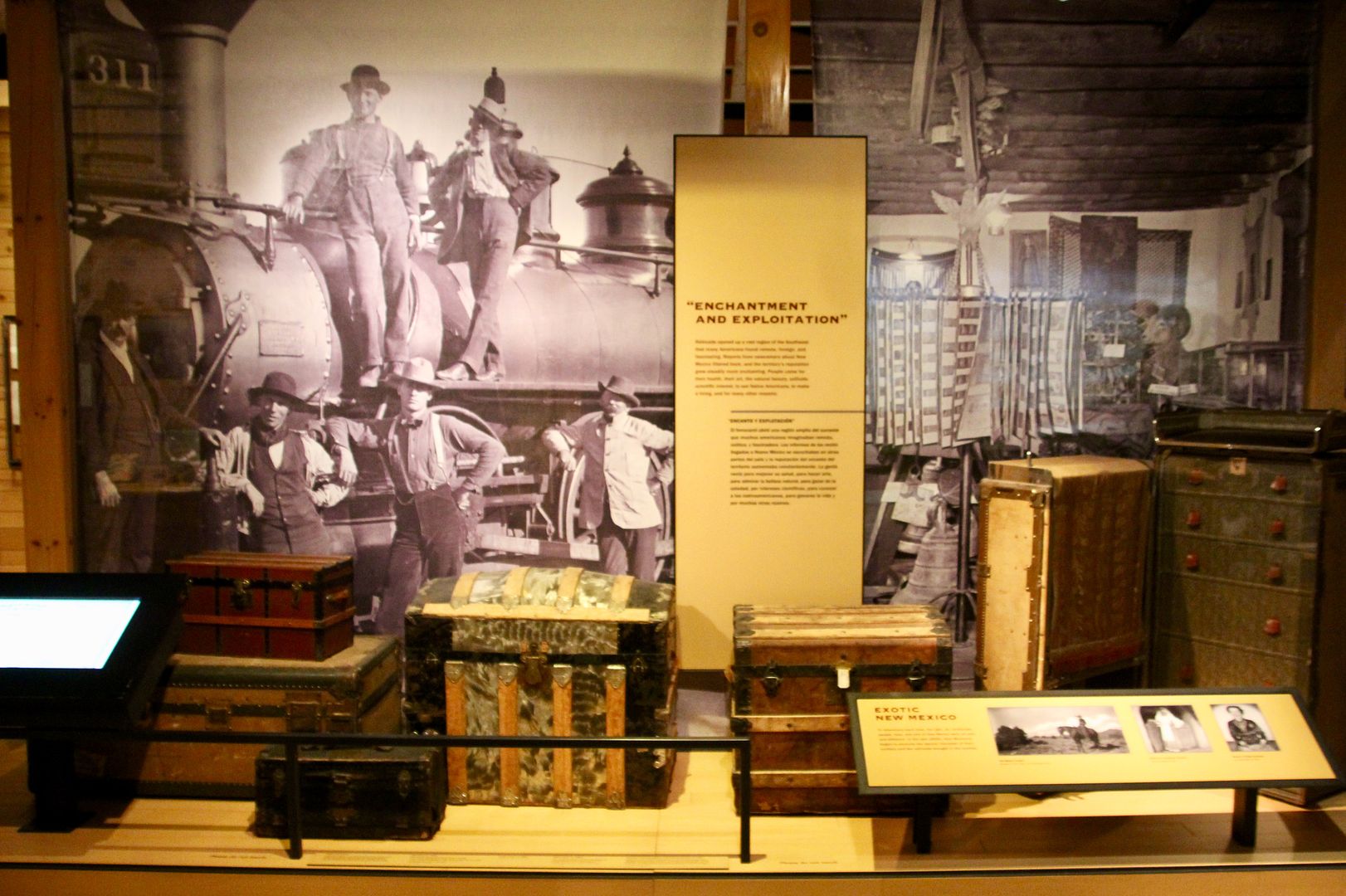
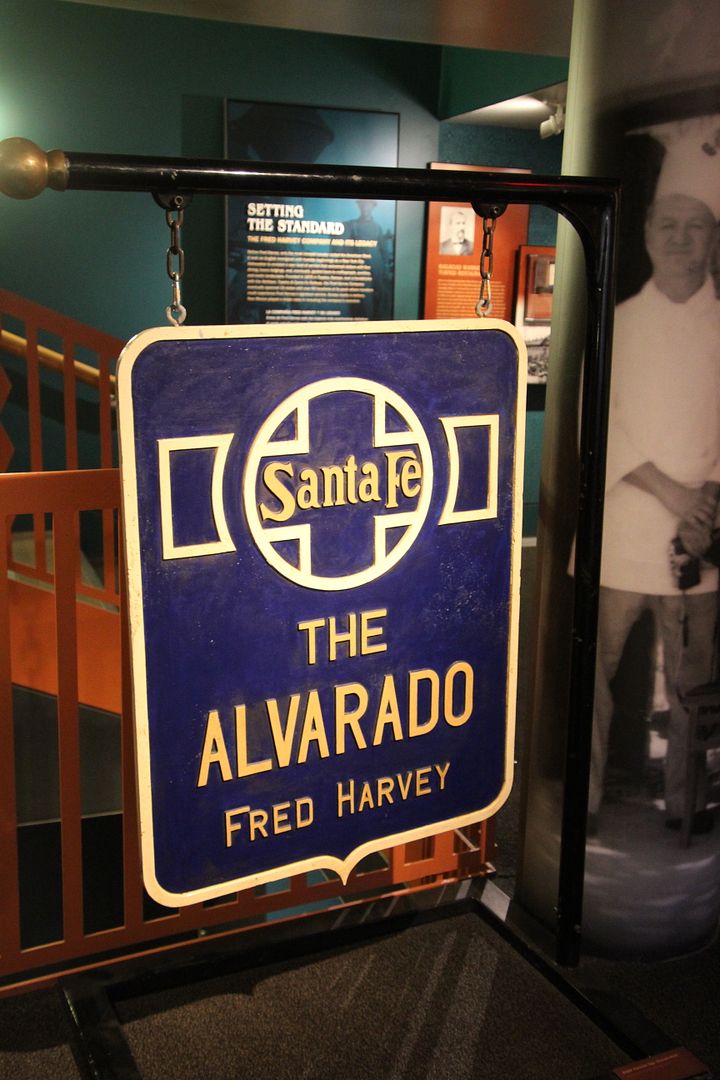
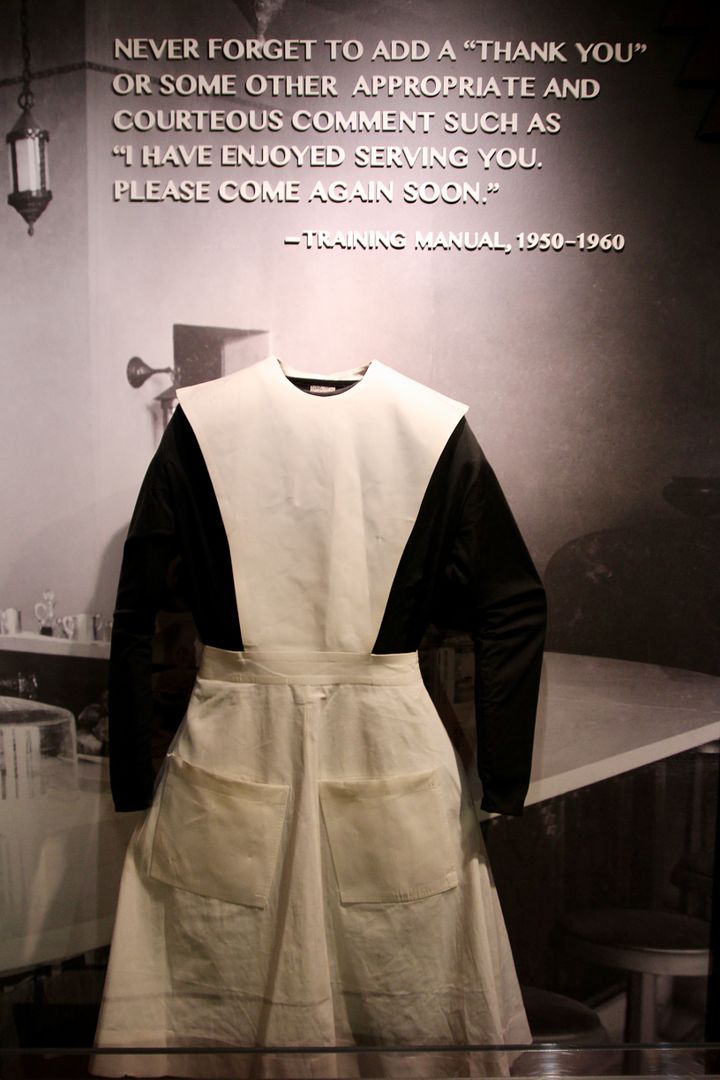
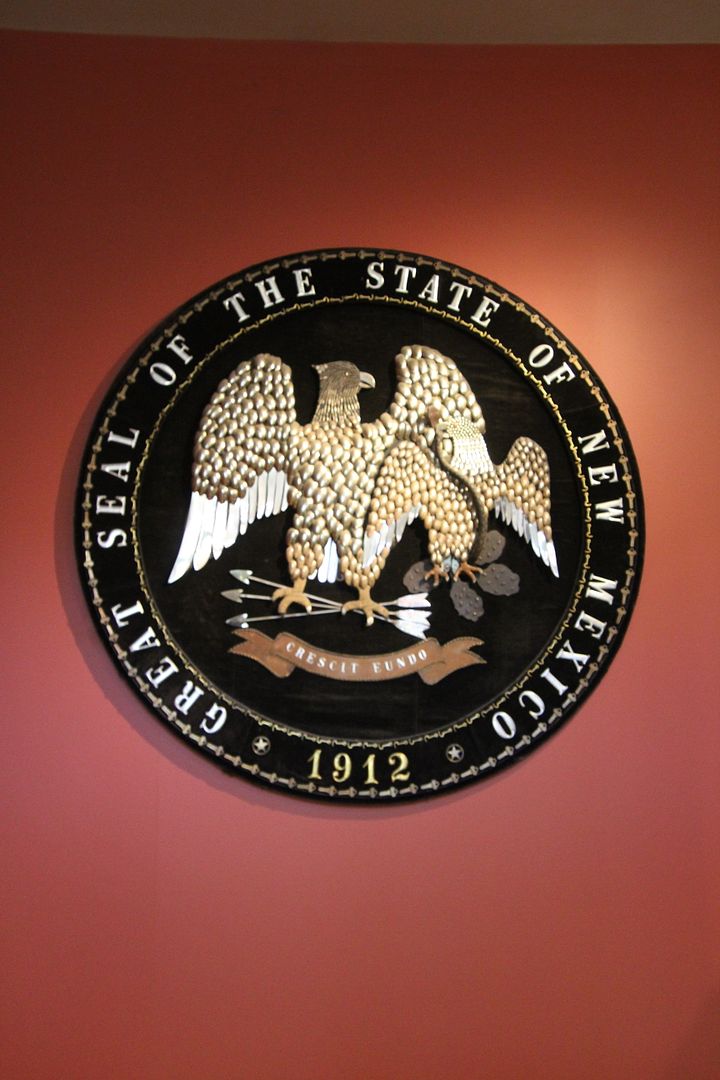
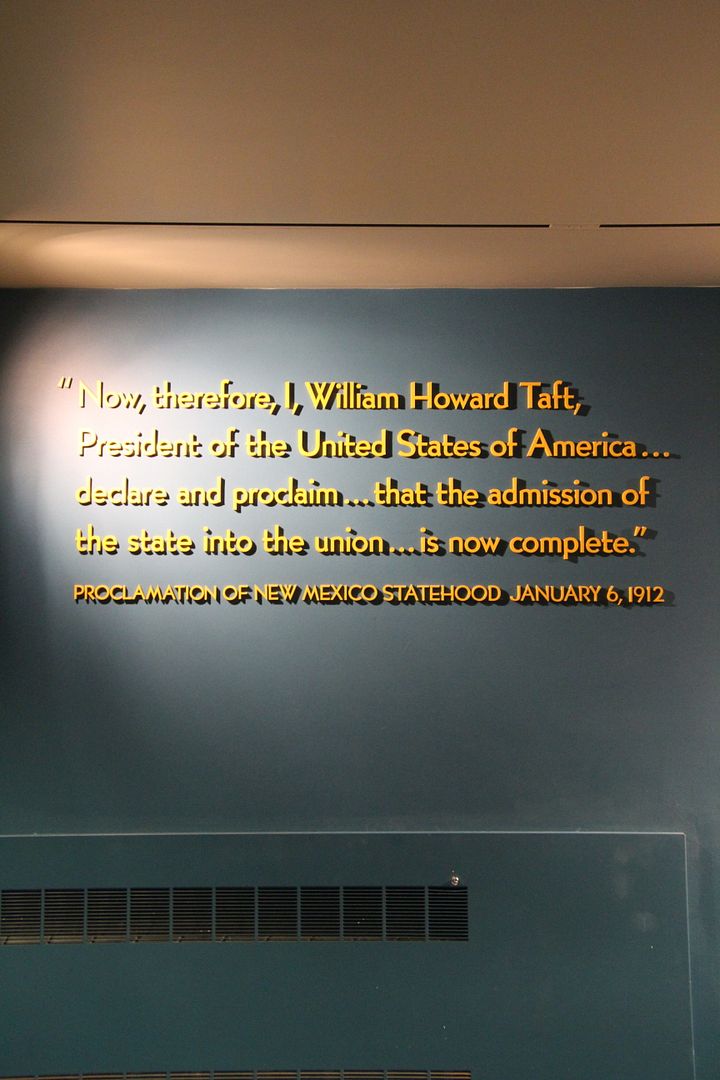
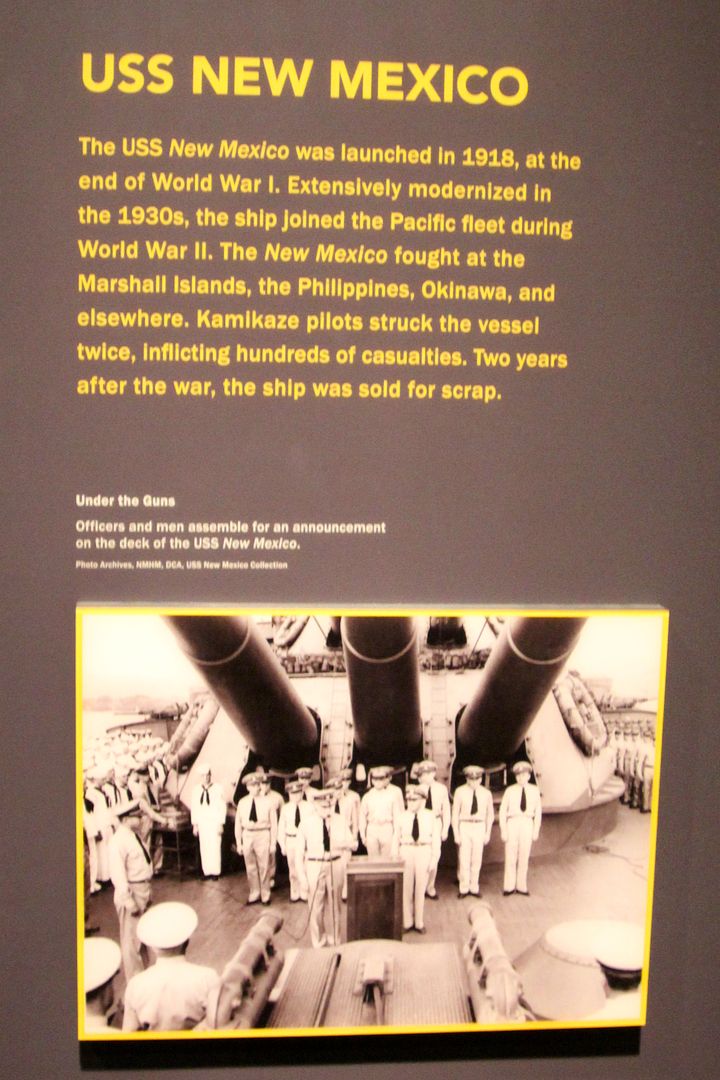

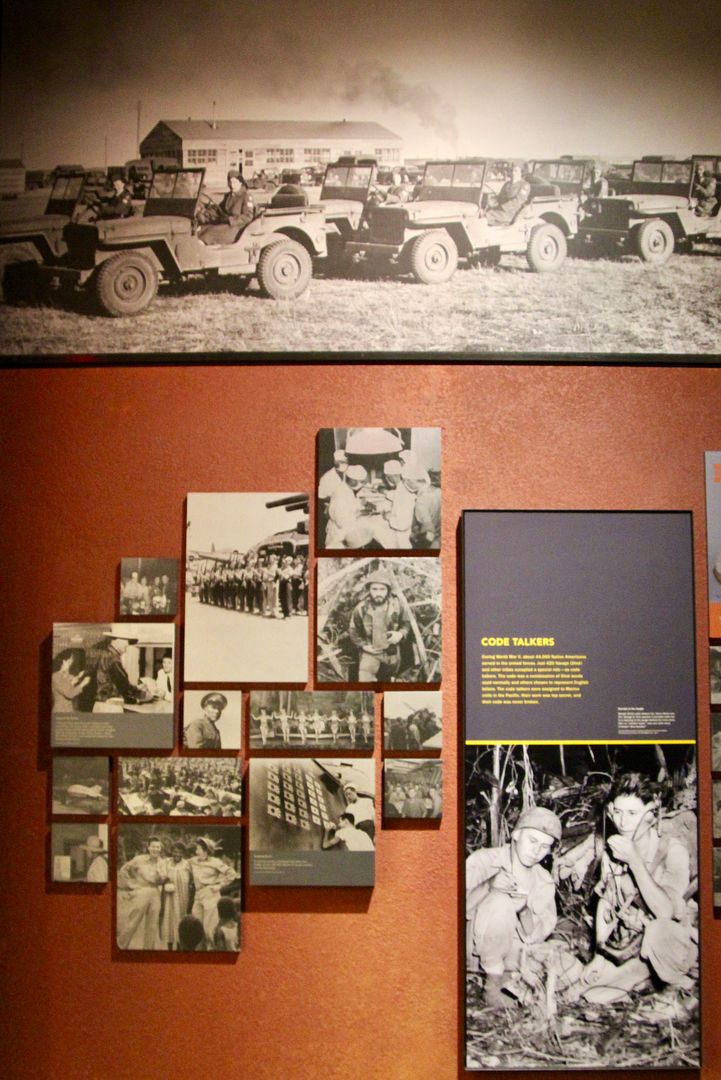
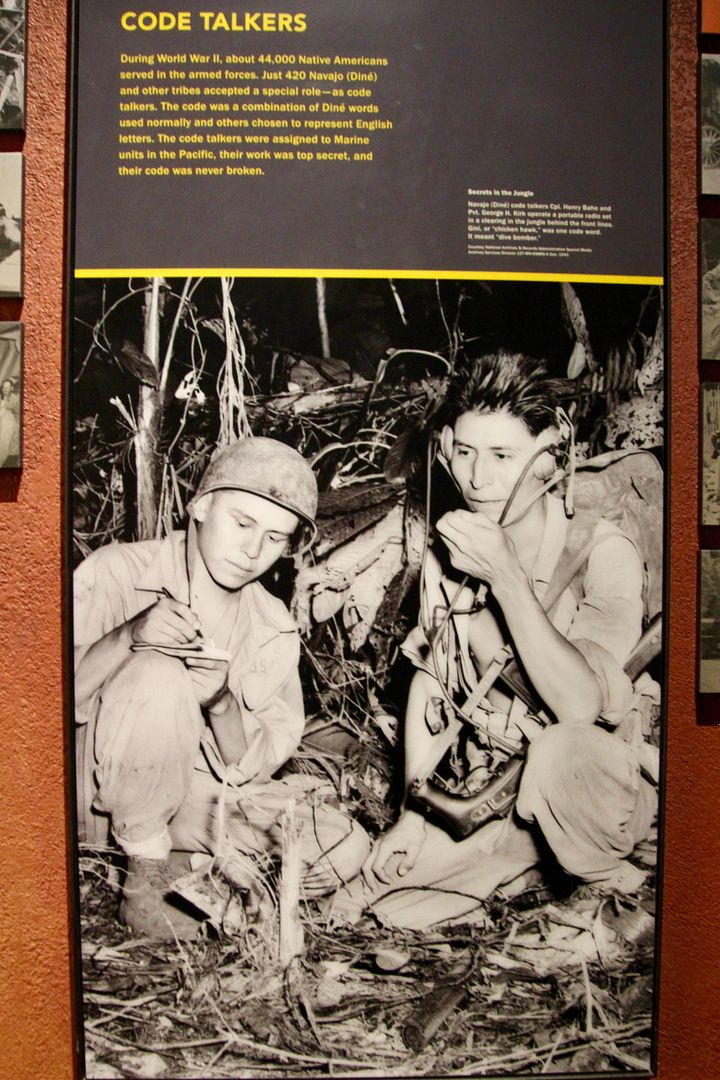
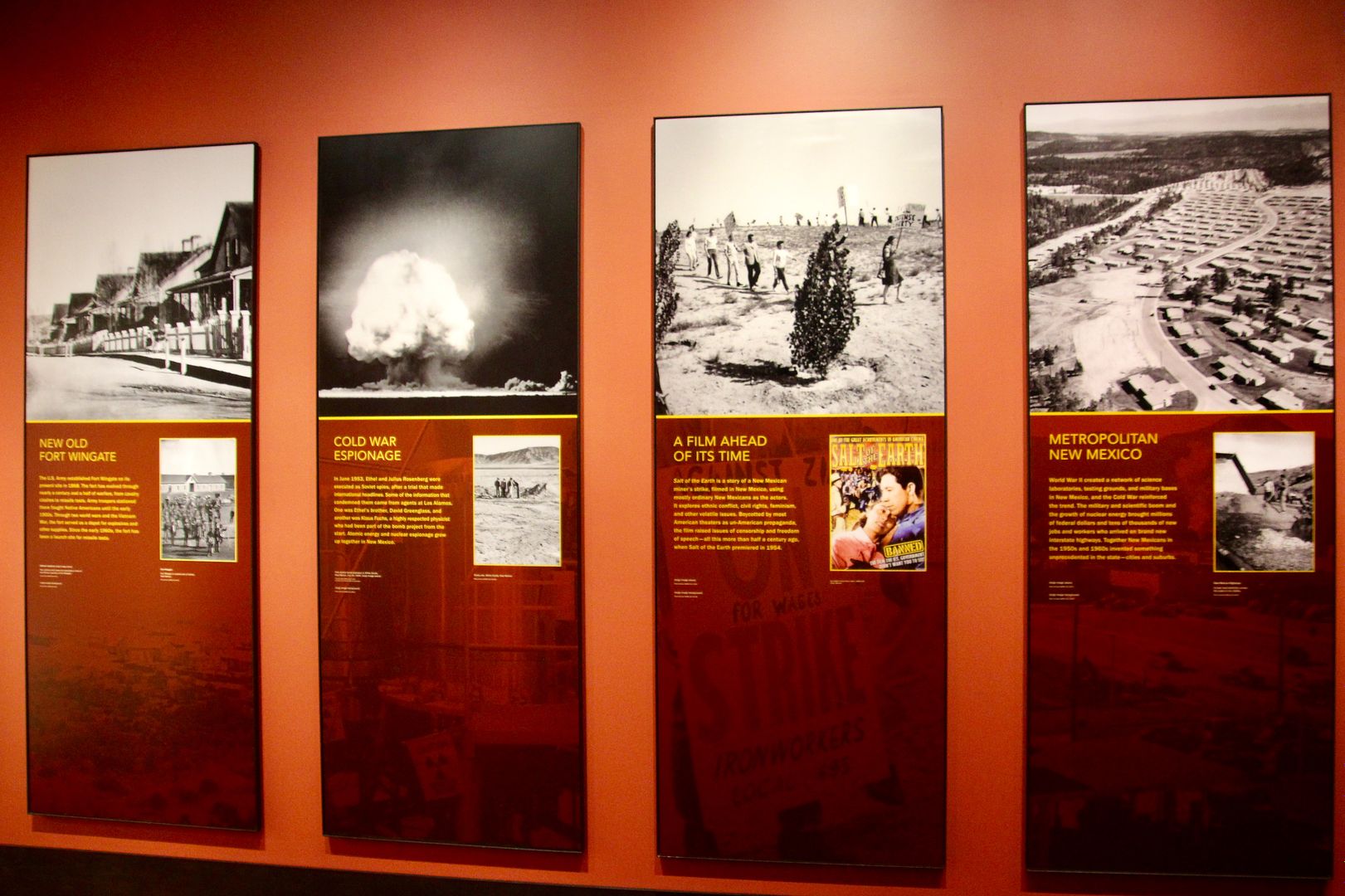
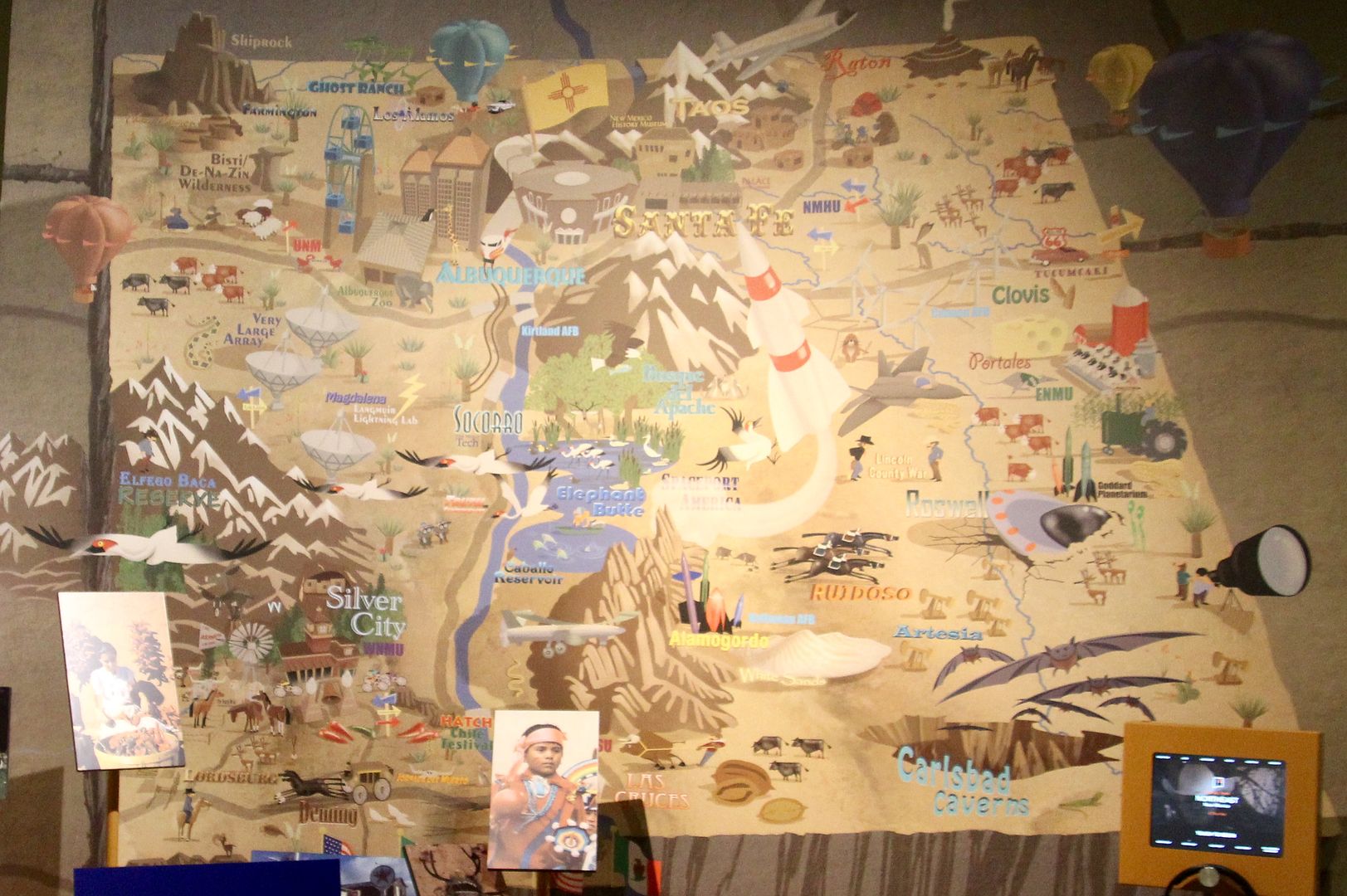
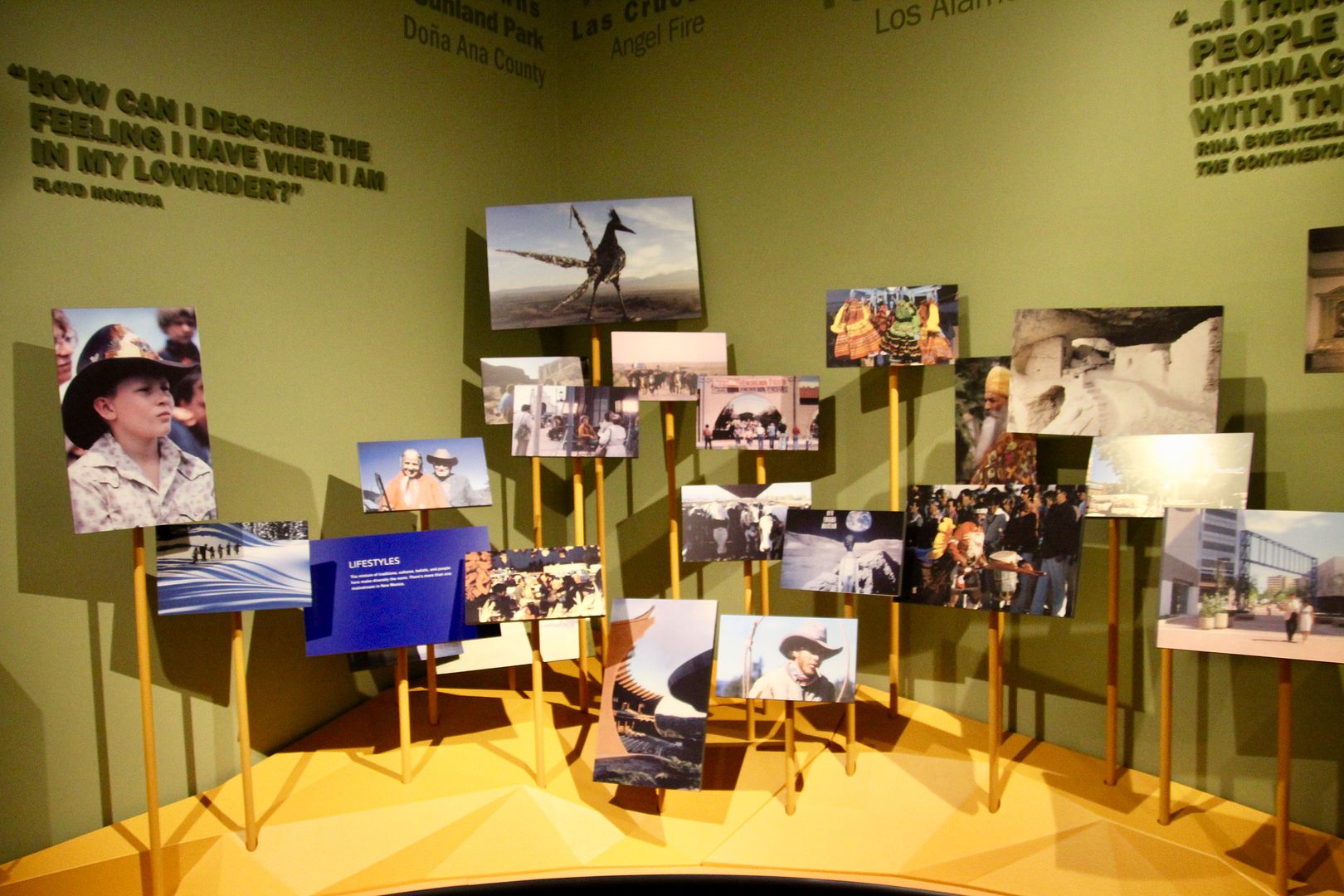
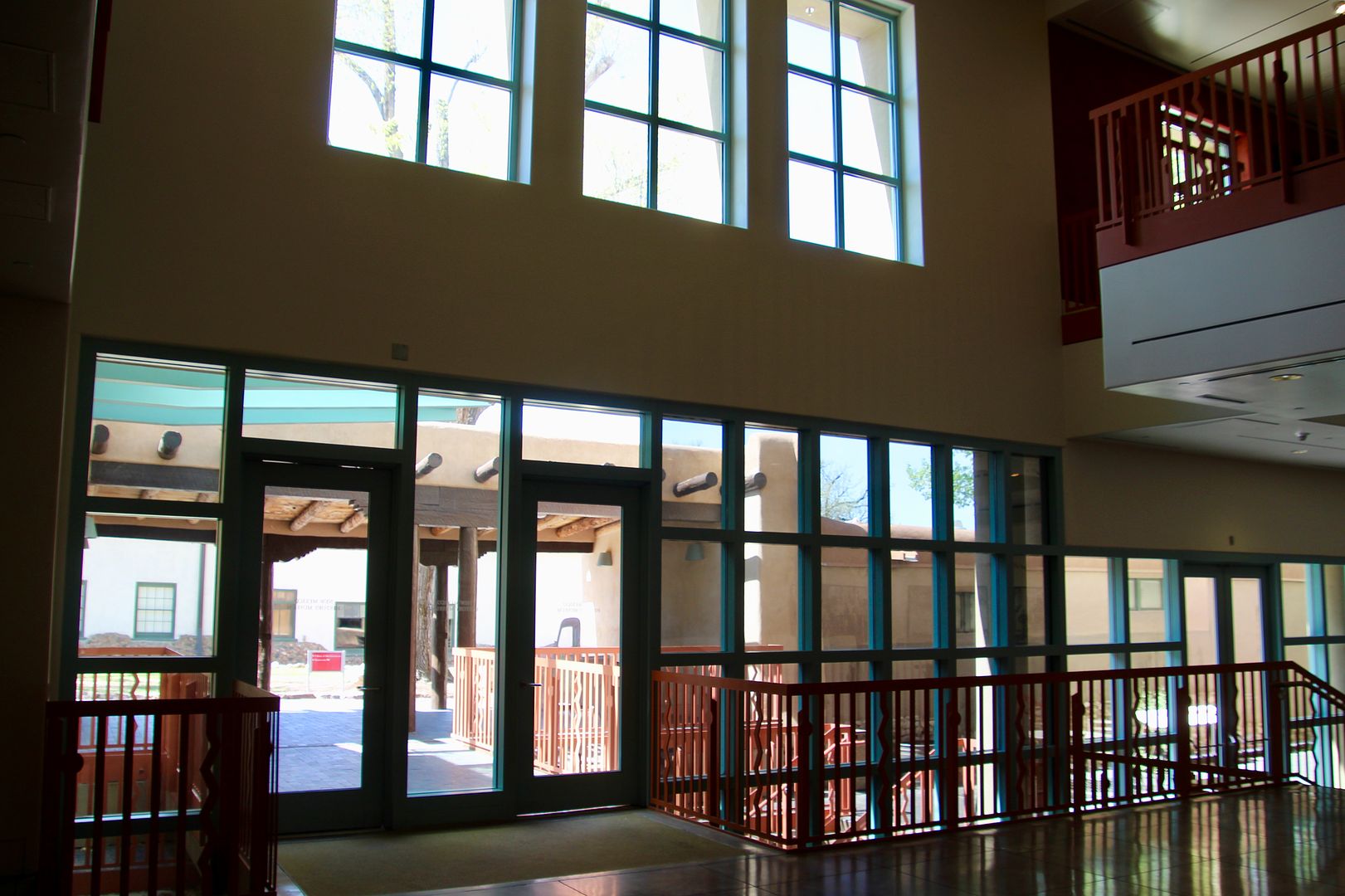
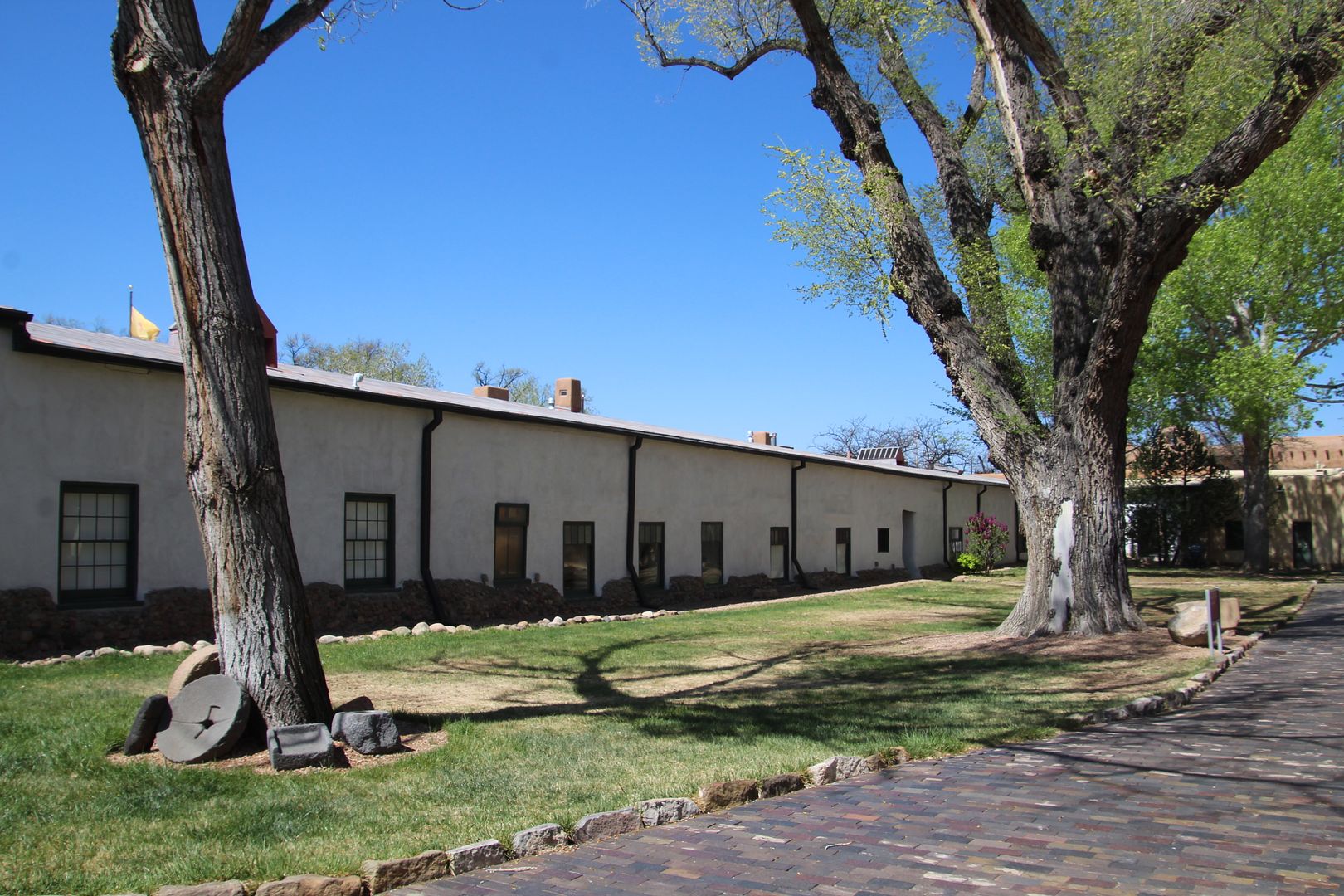

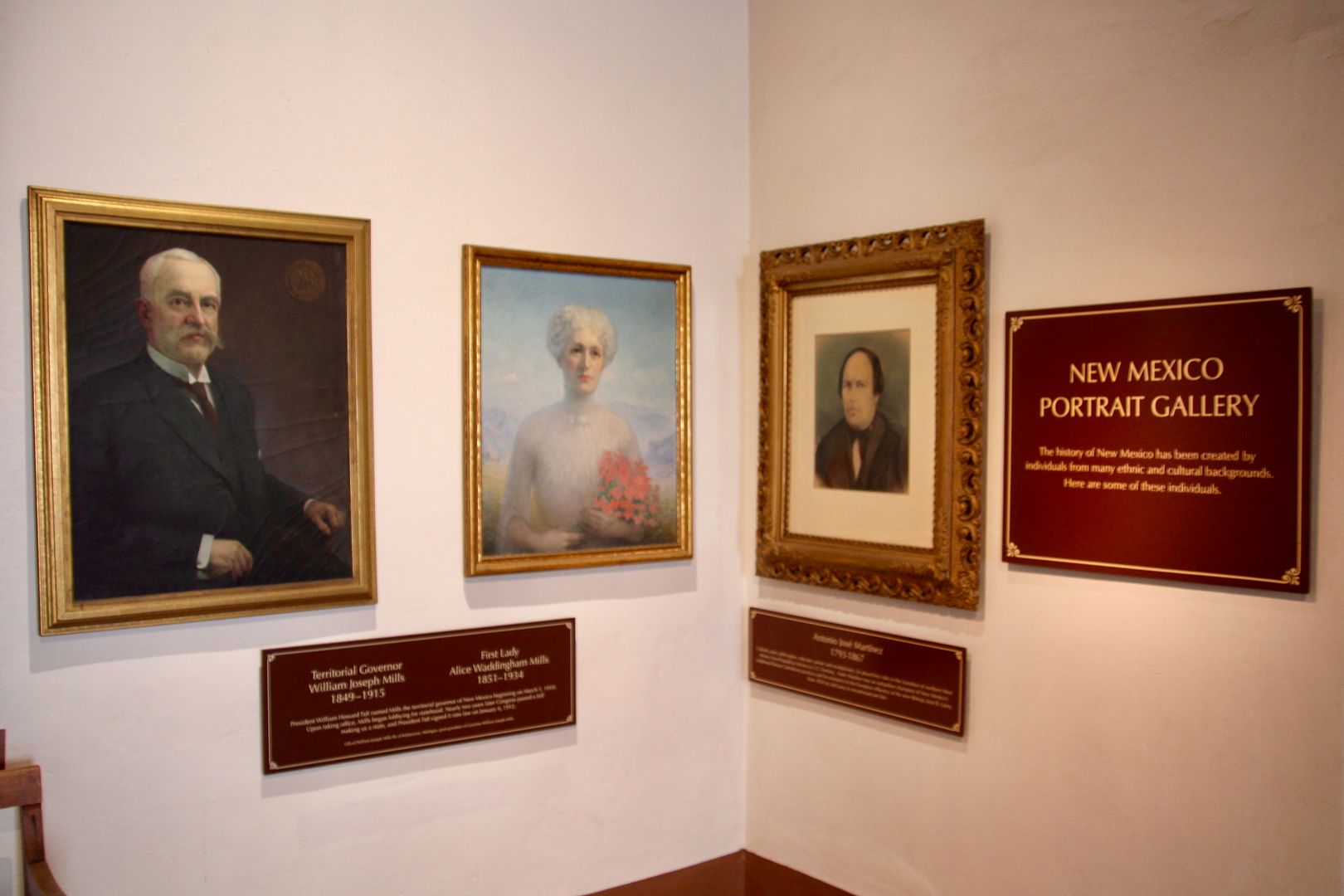

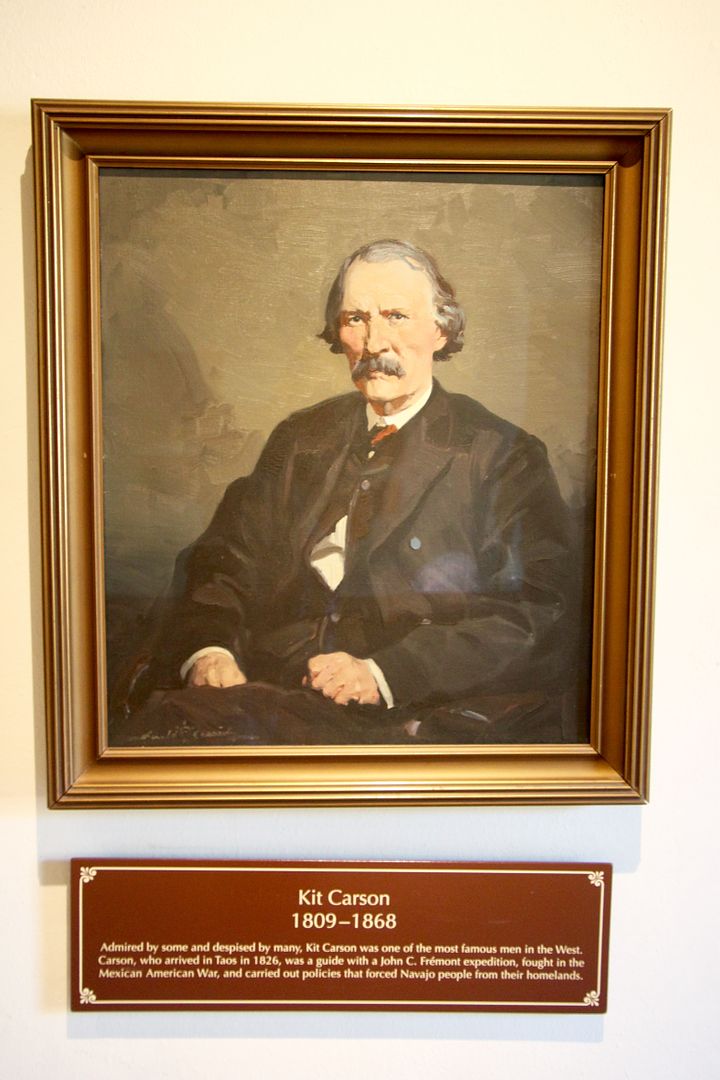
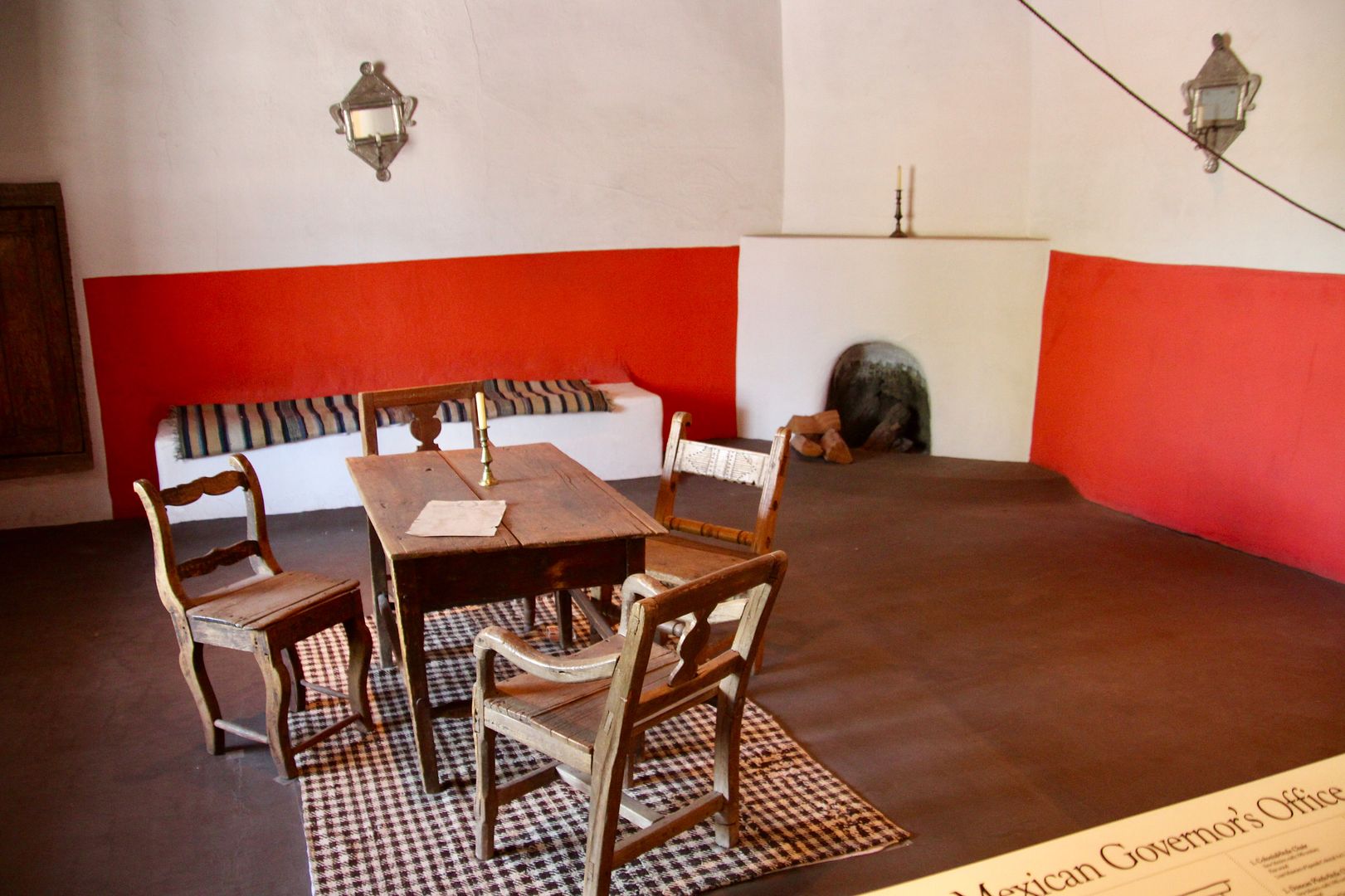
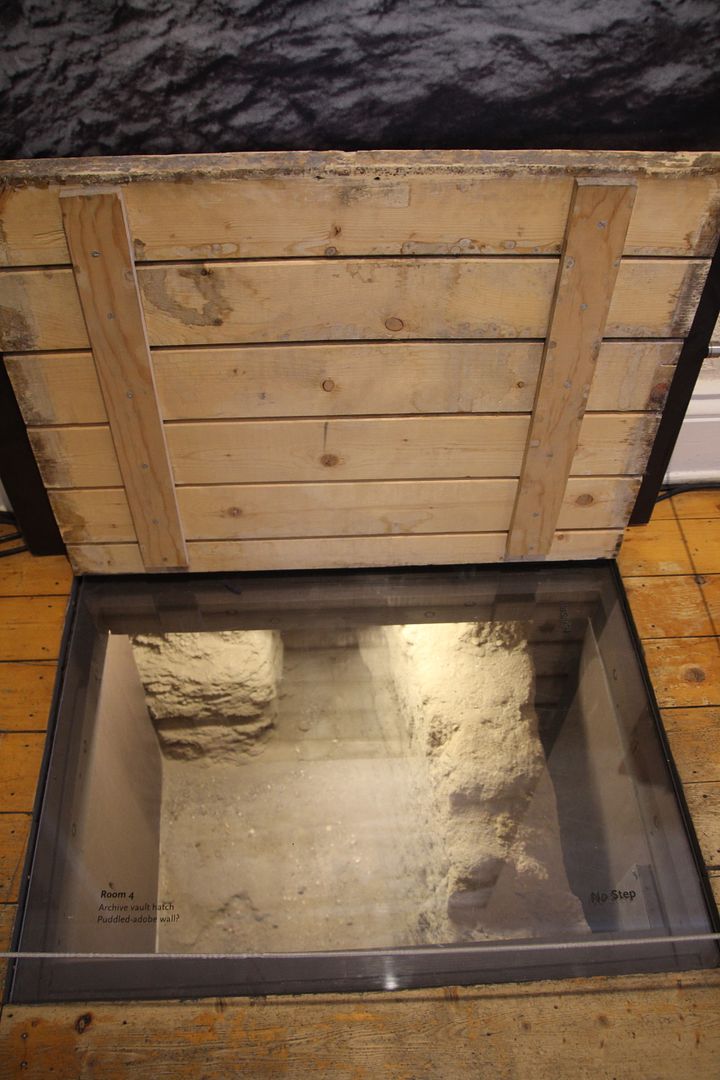
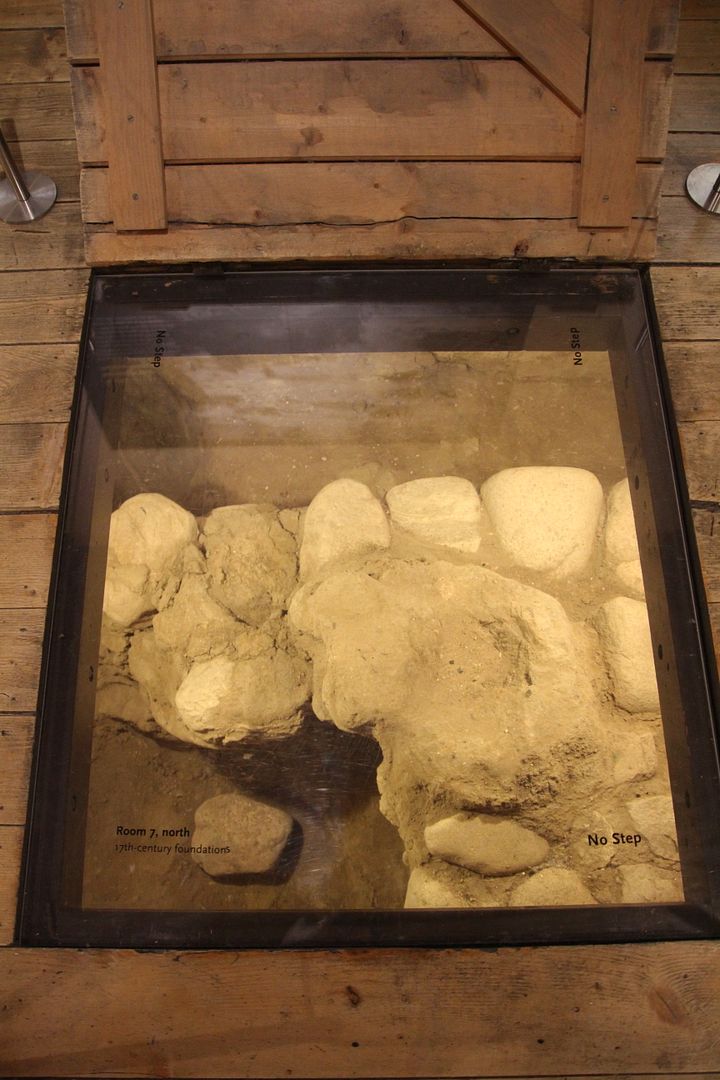

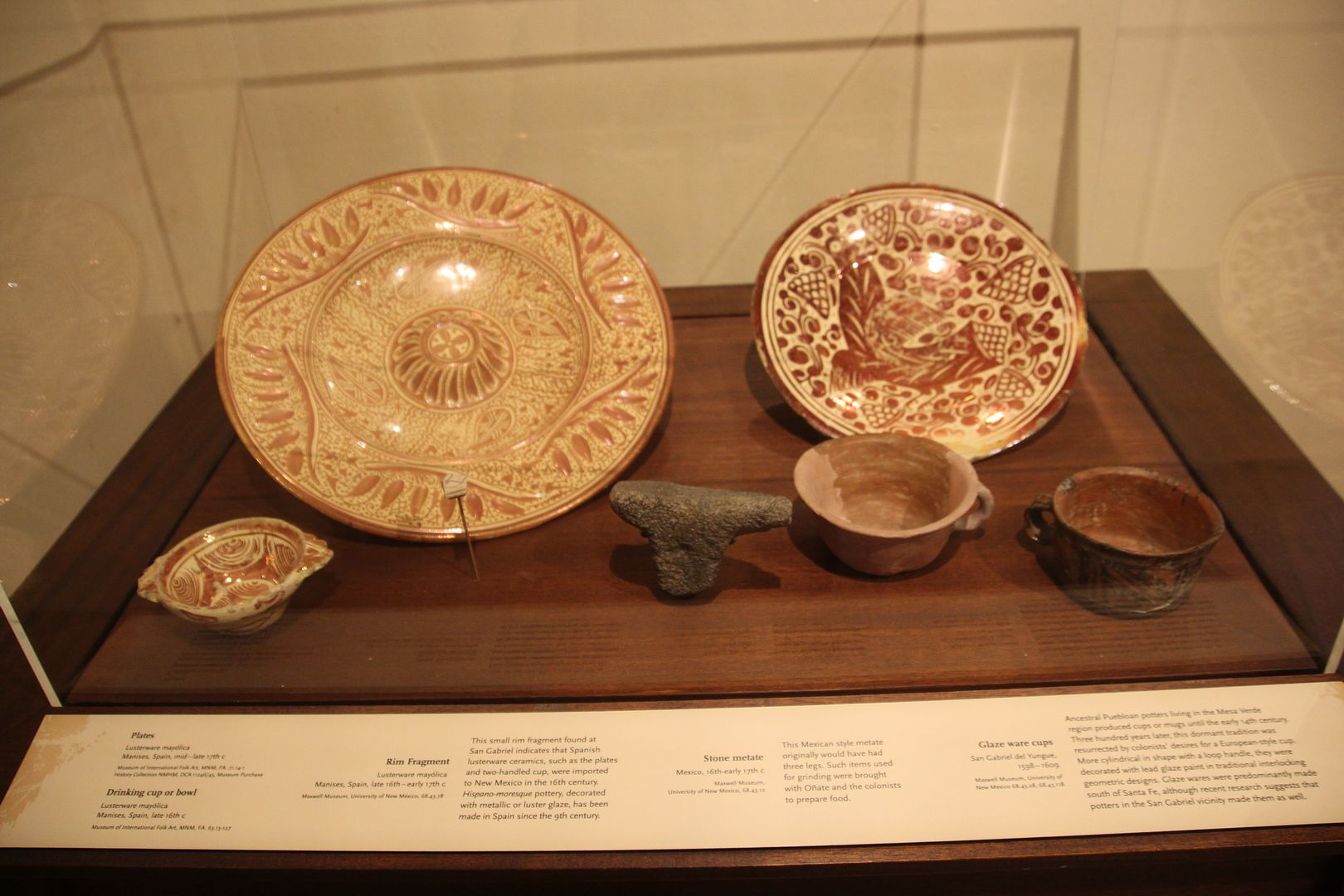
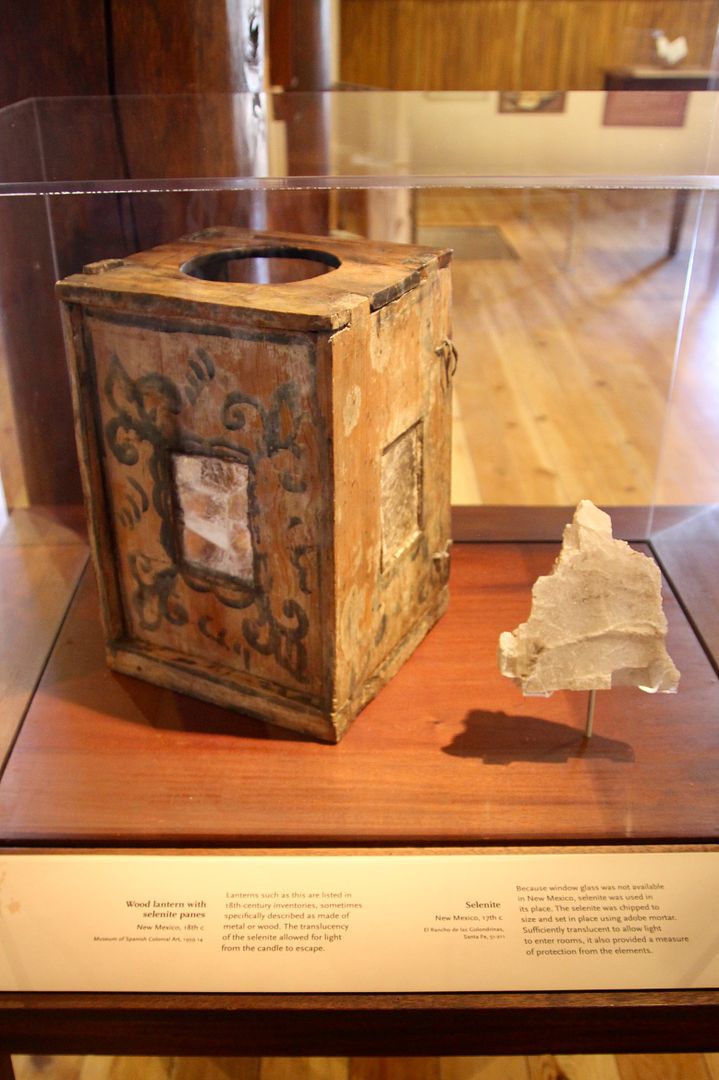
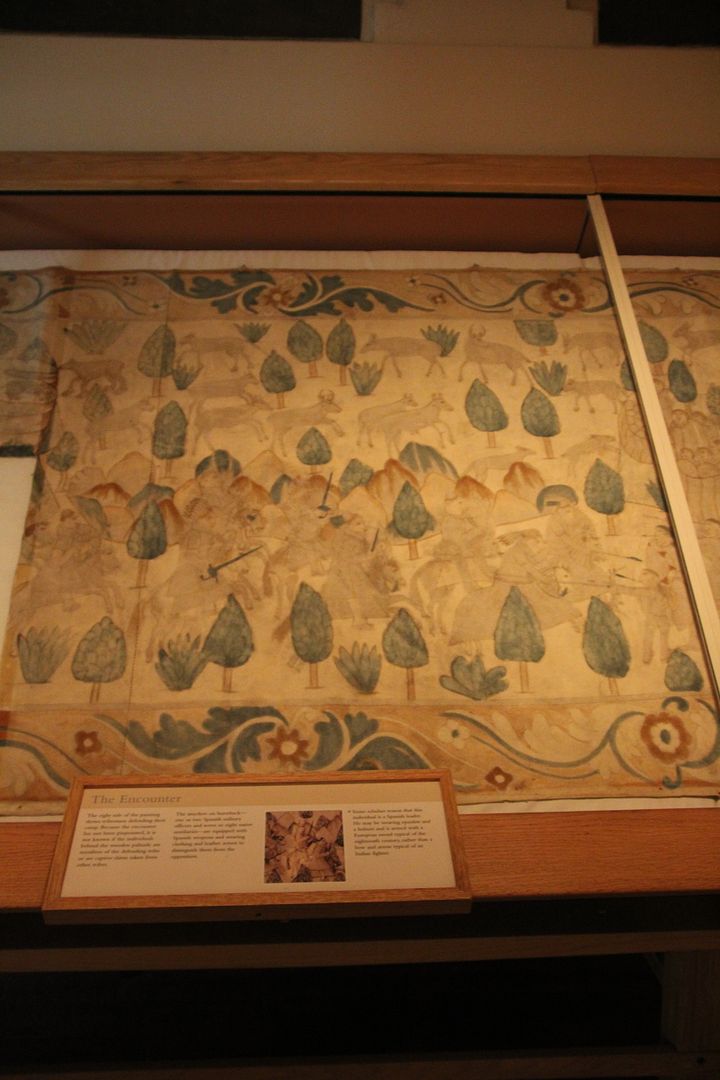
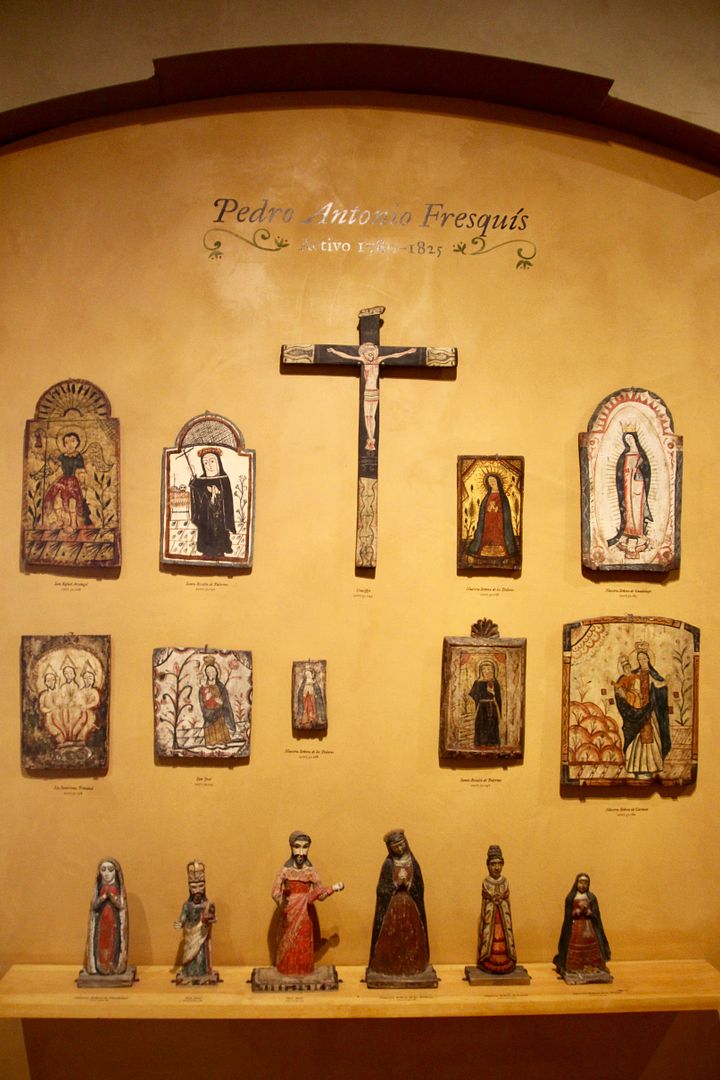
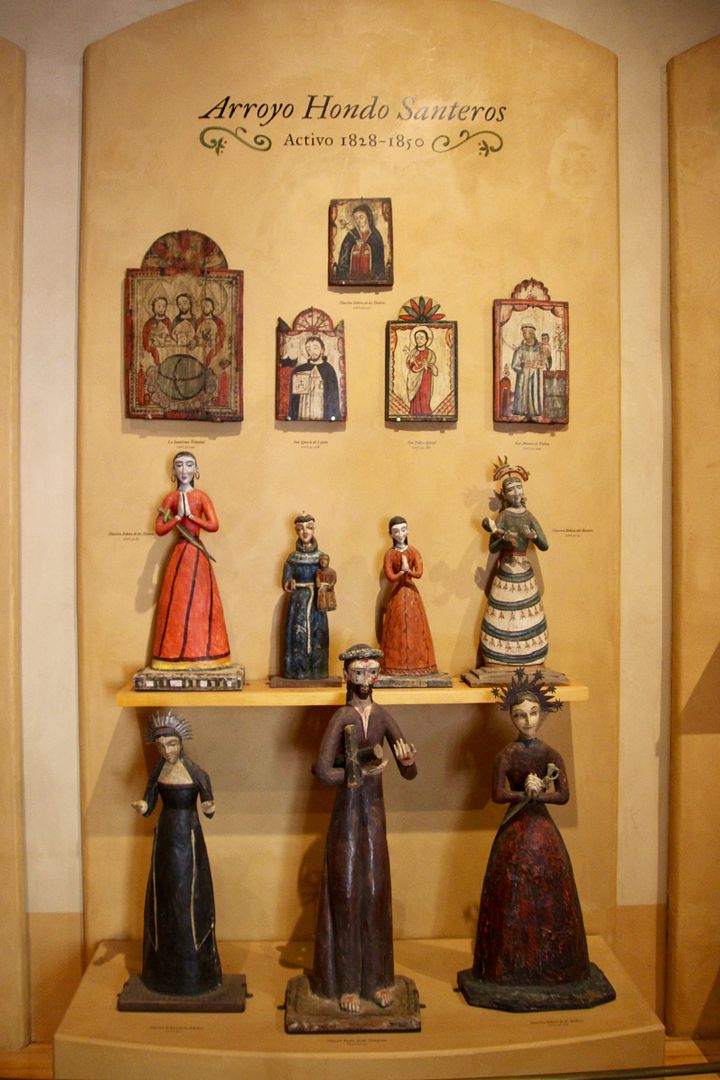
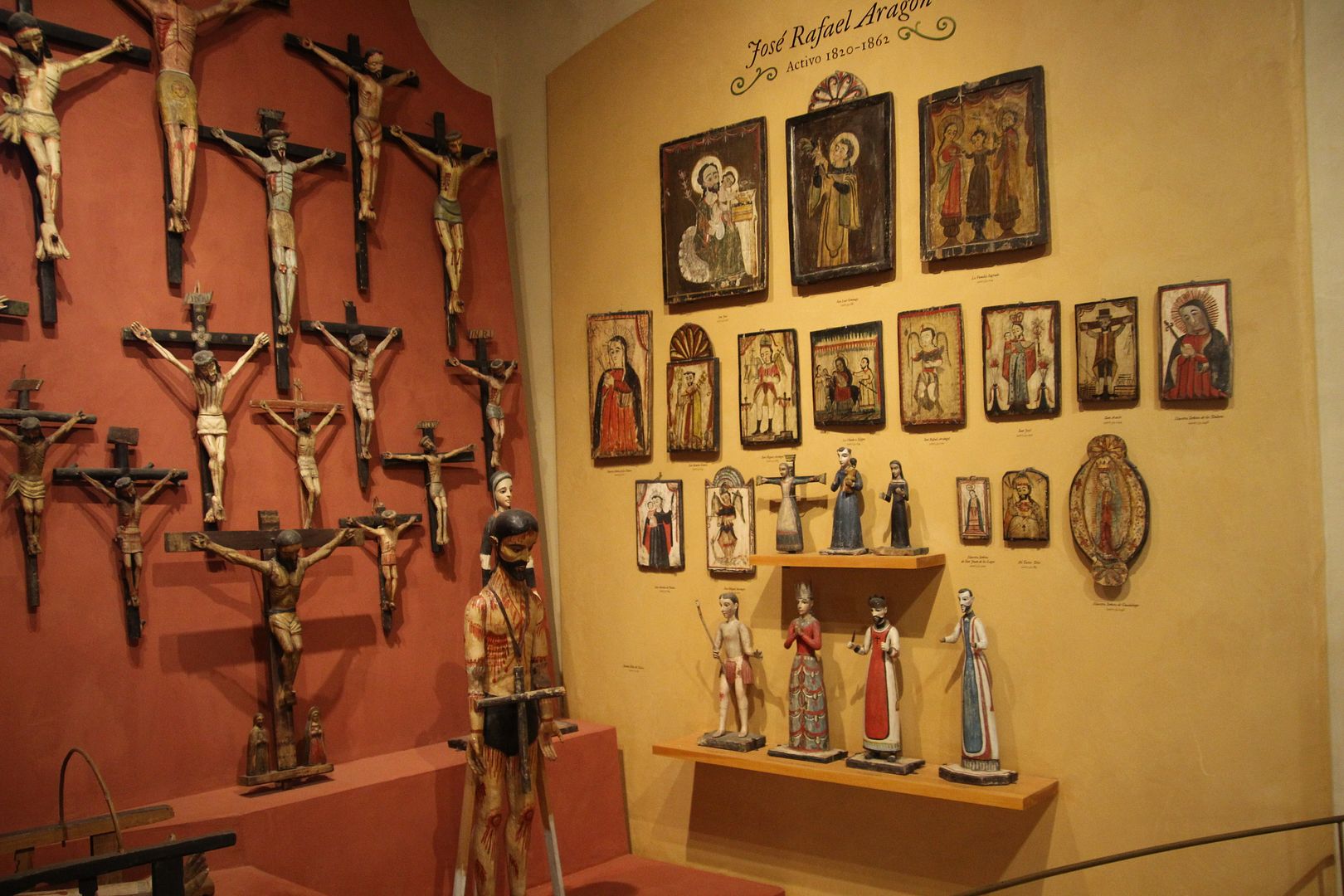
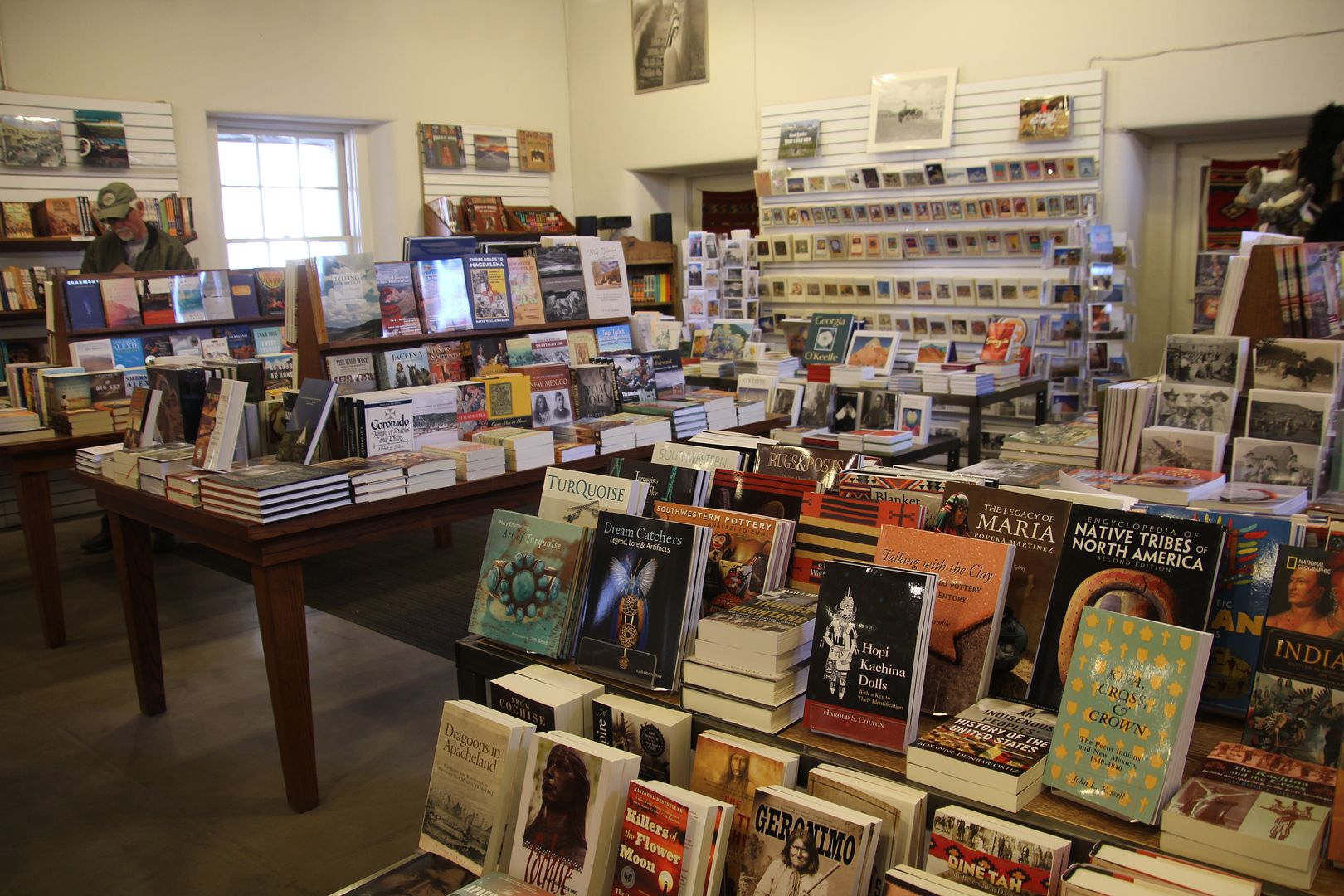
No comments:
Post a Comment